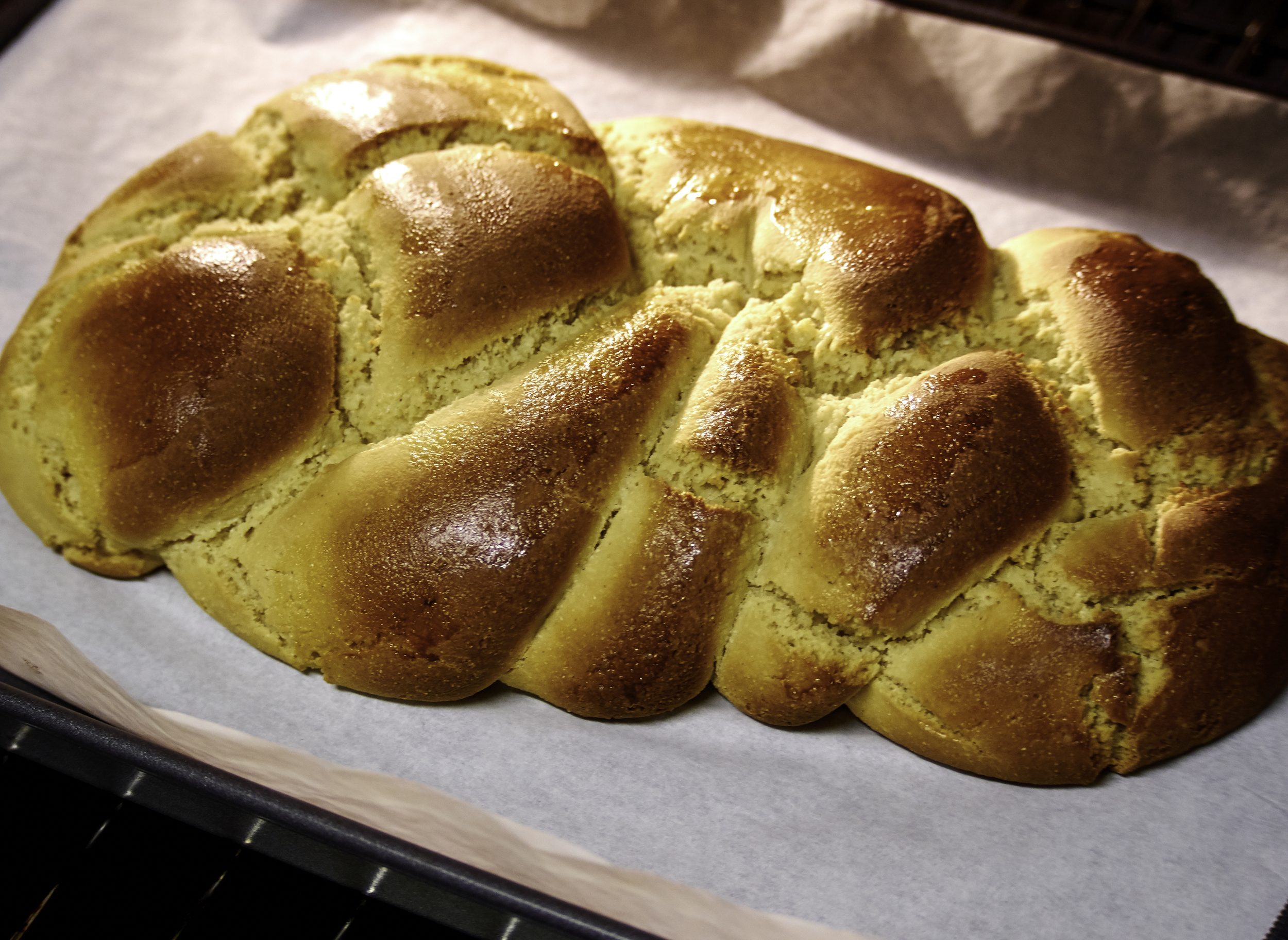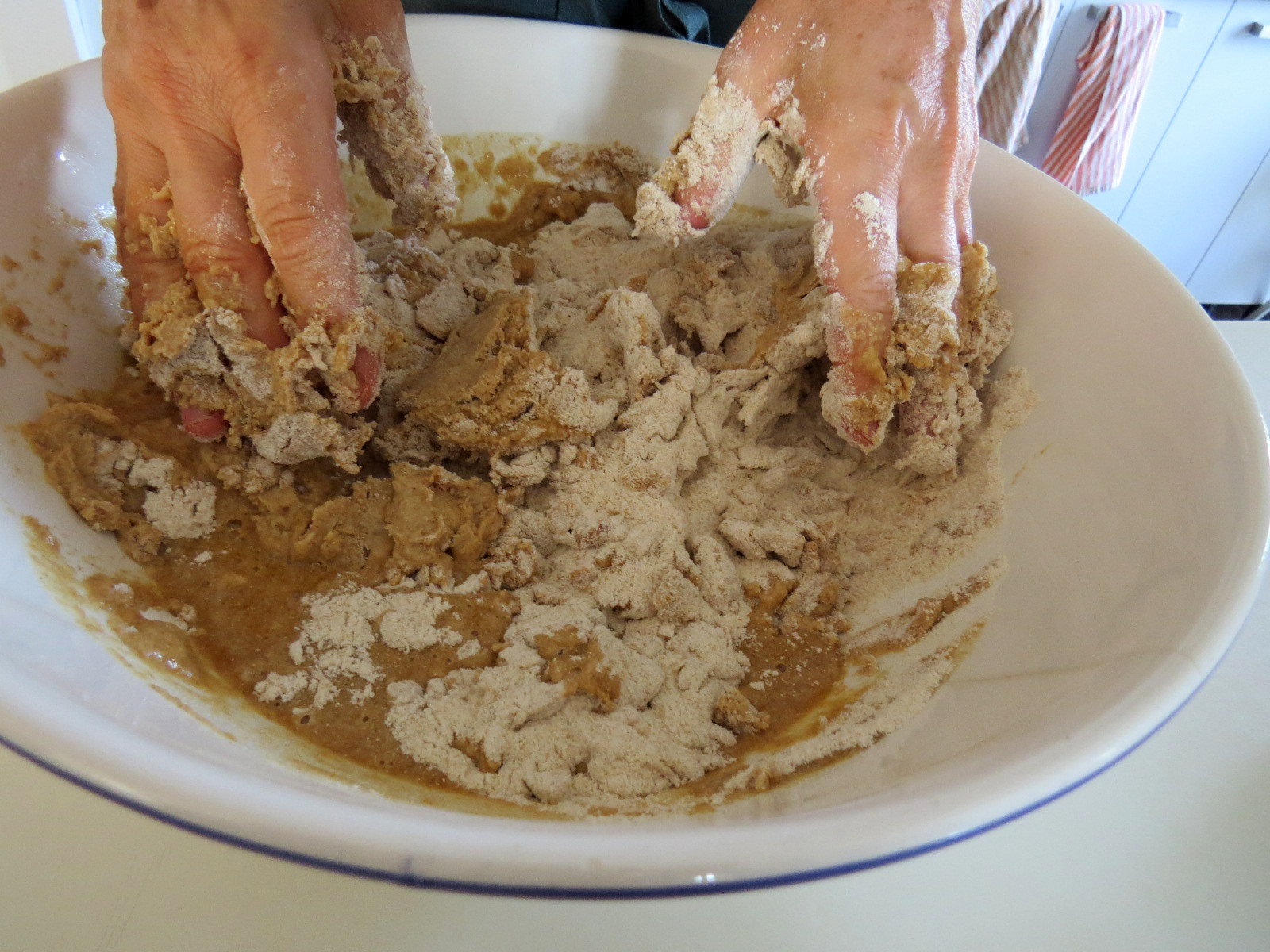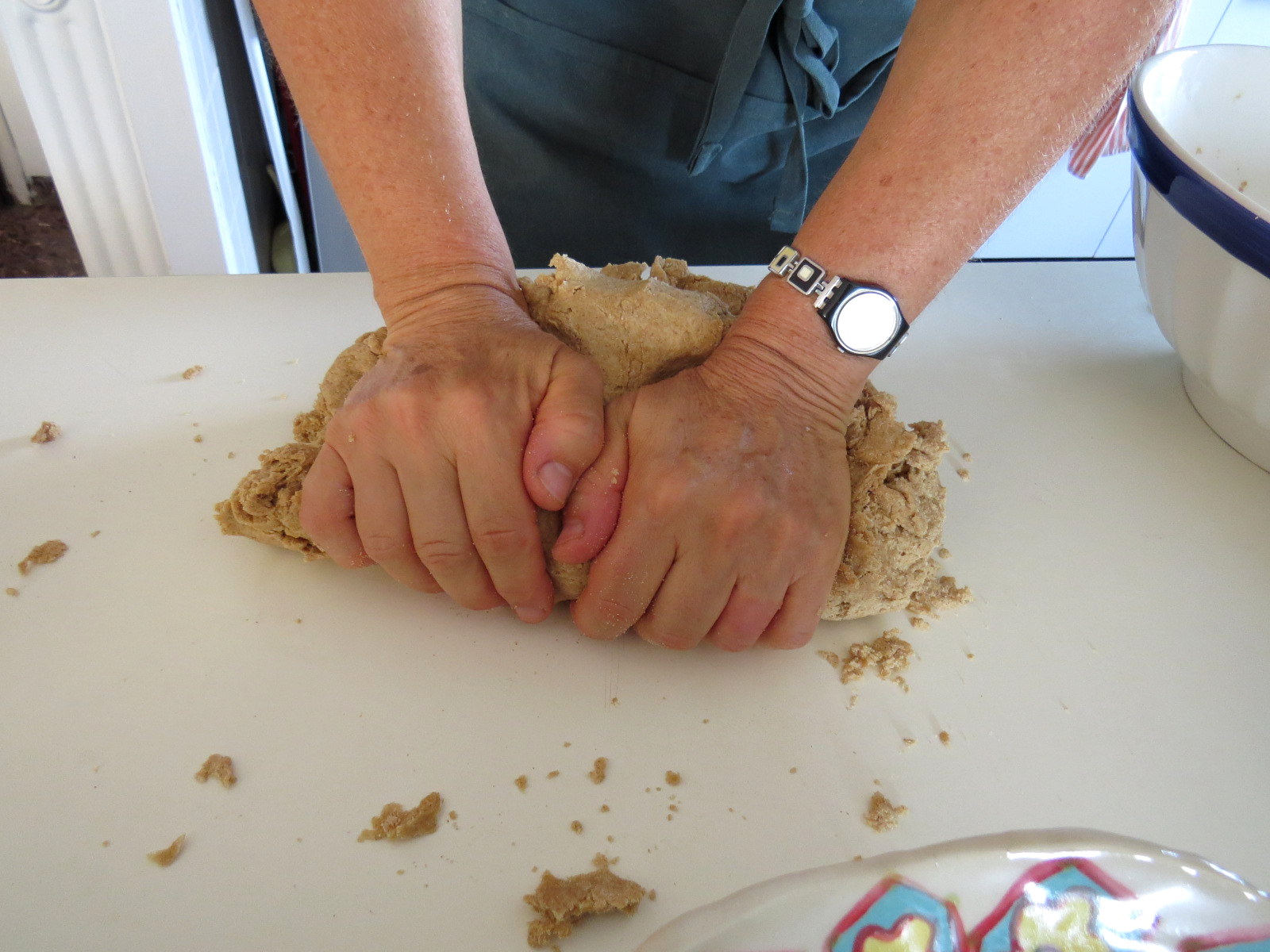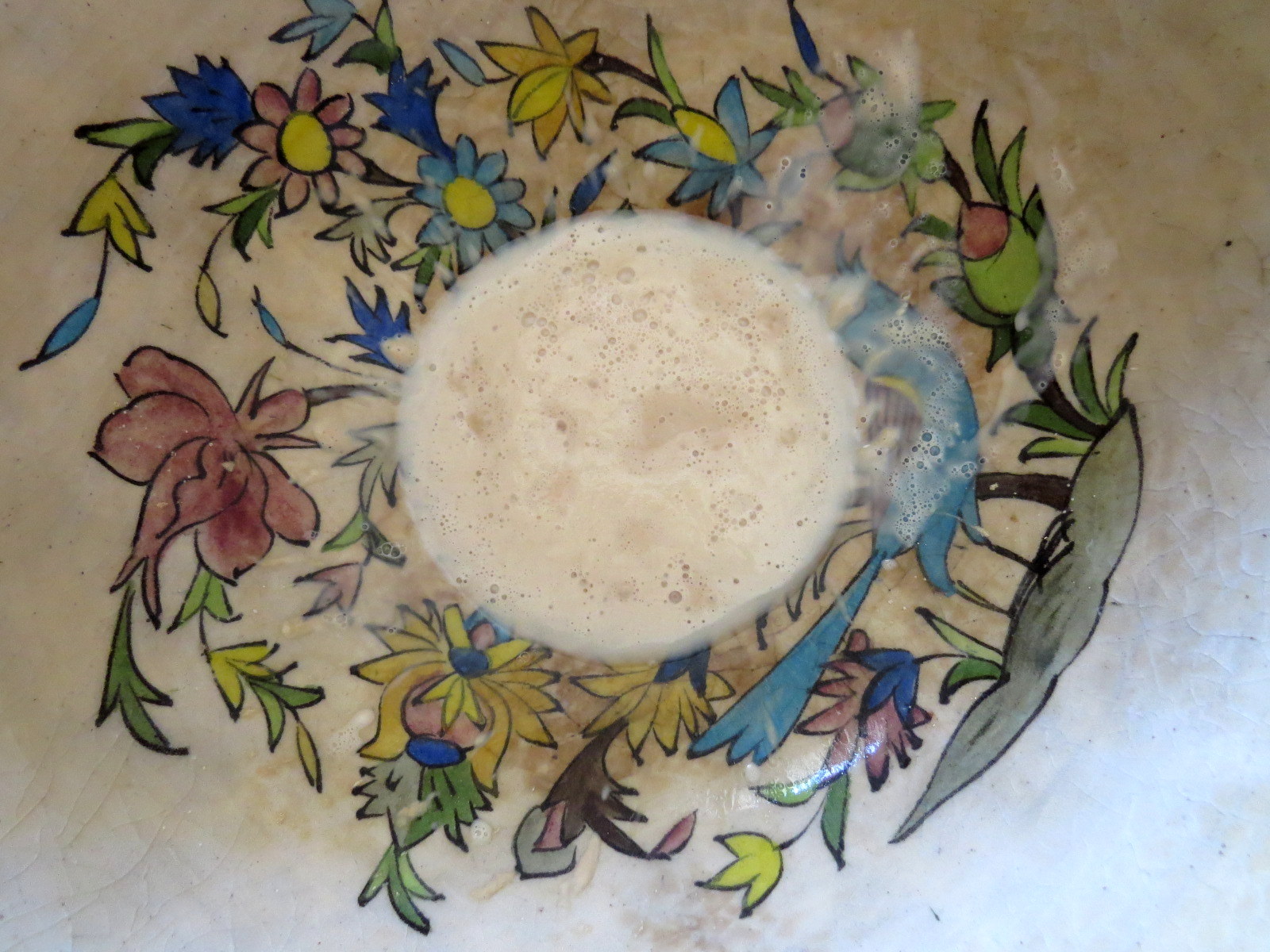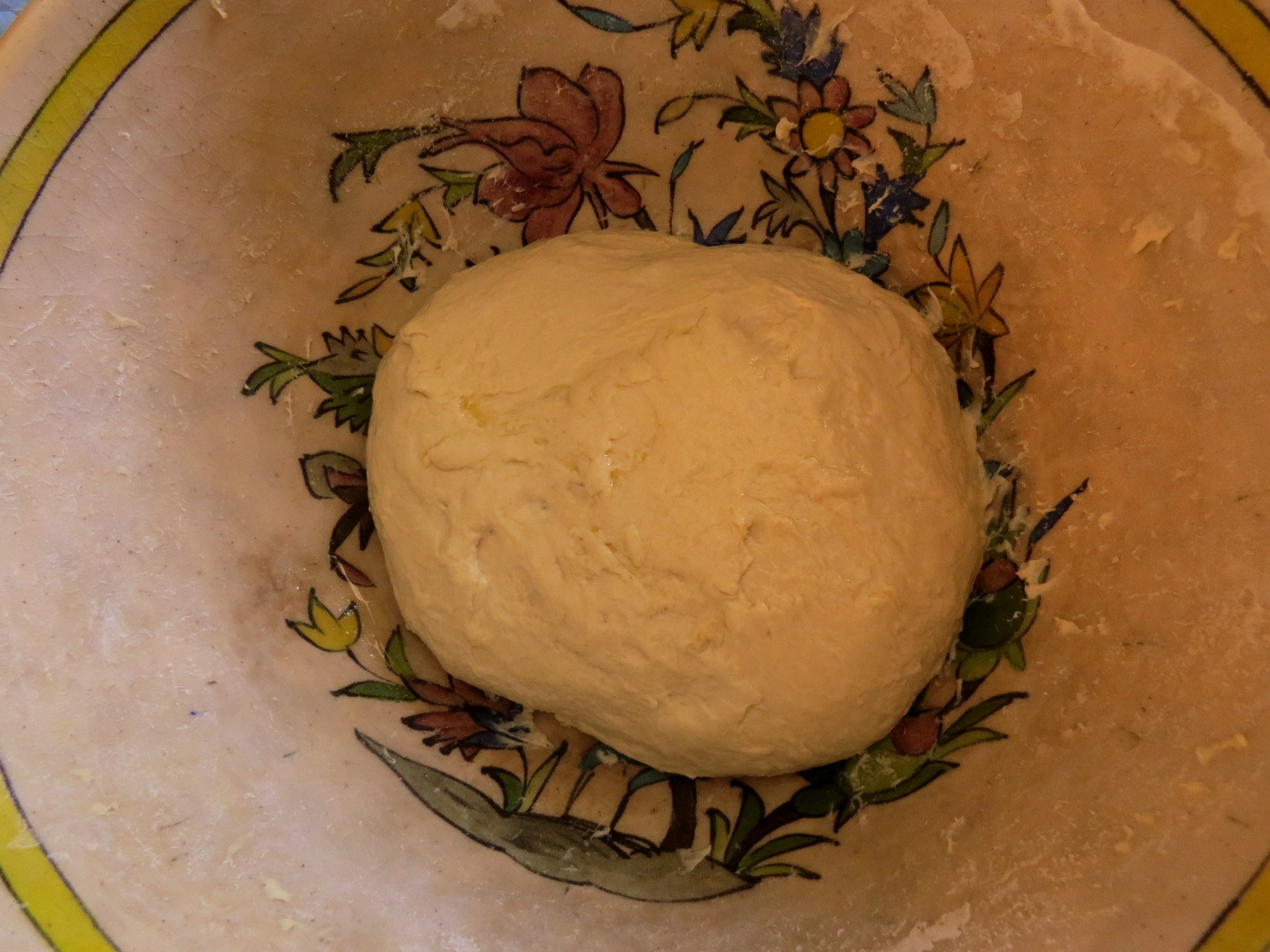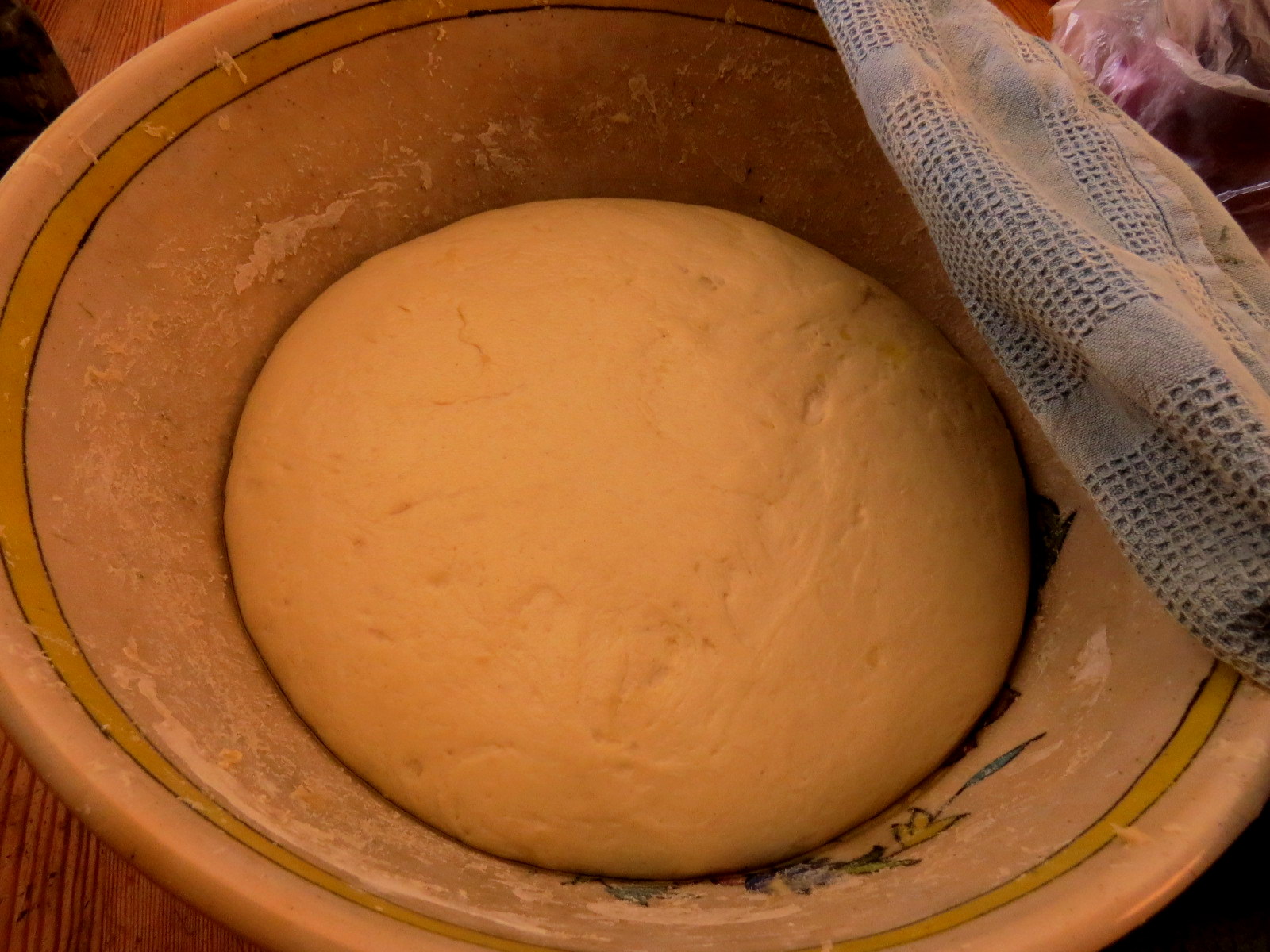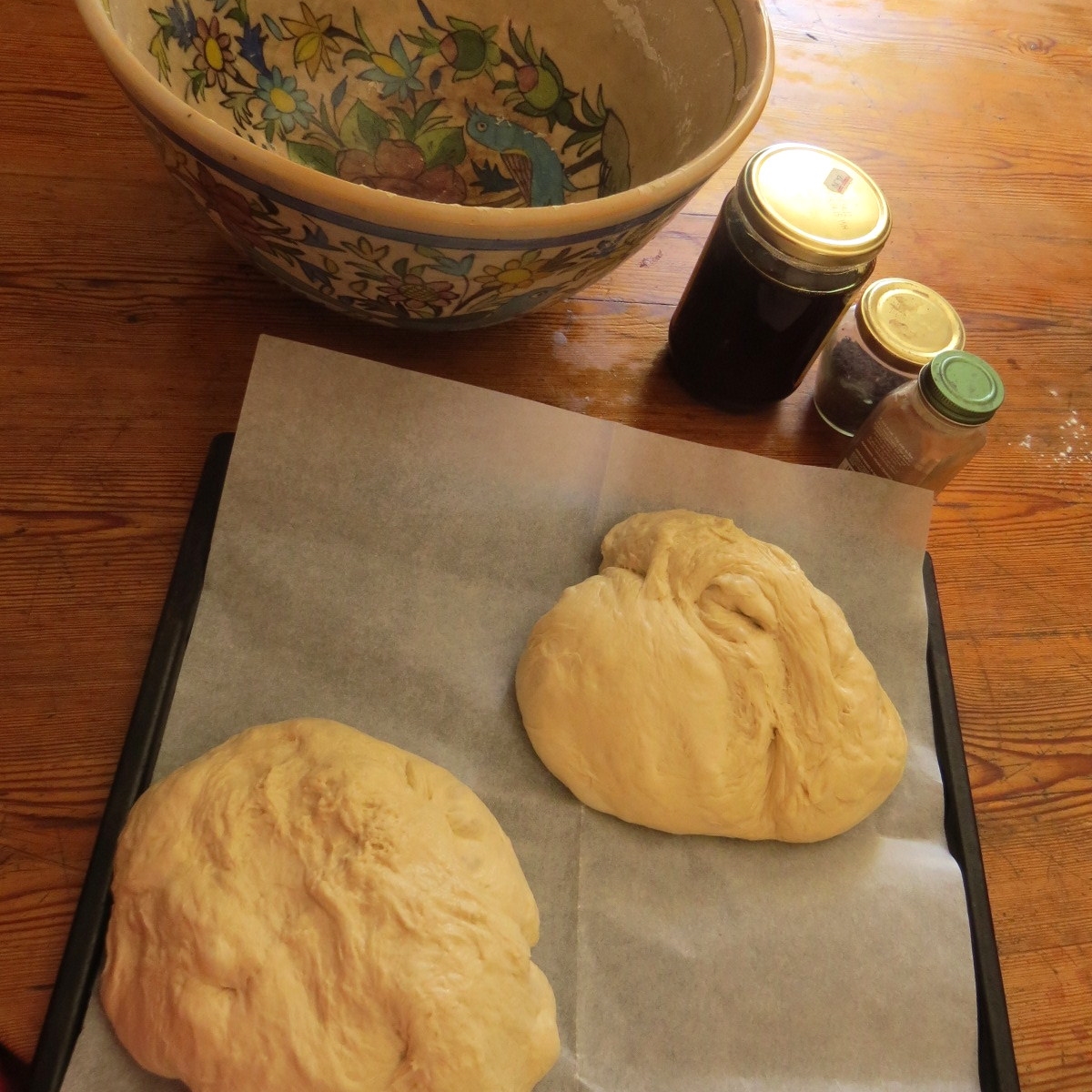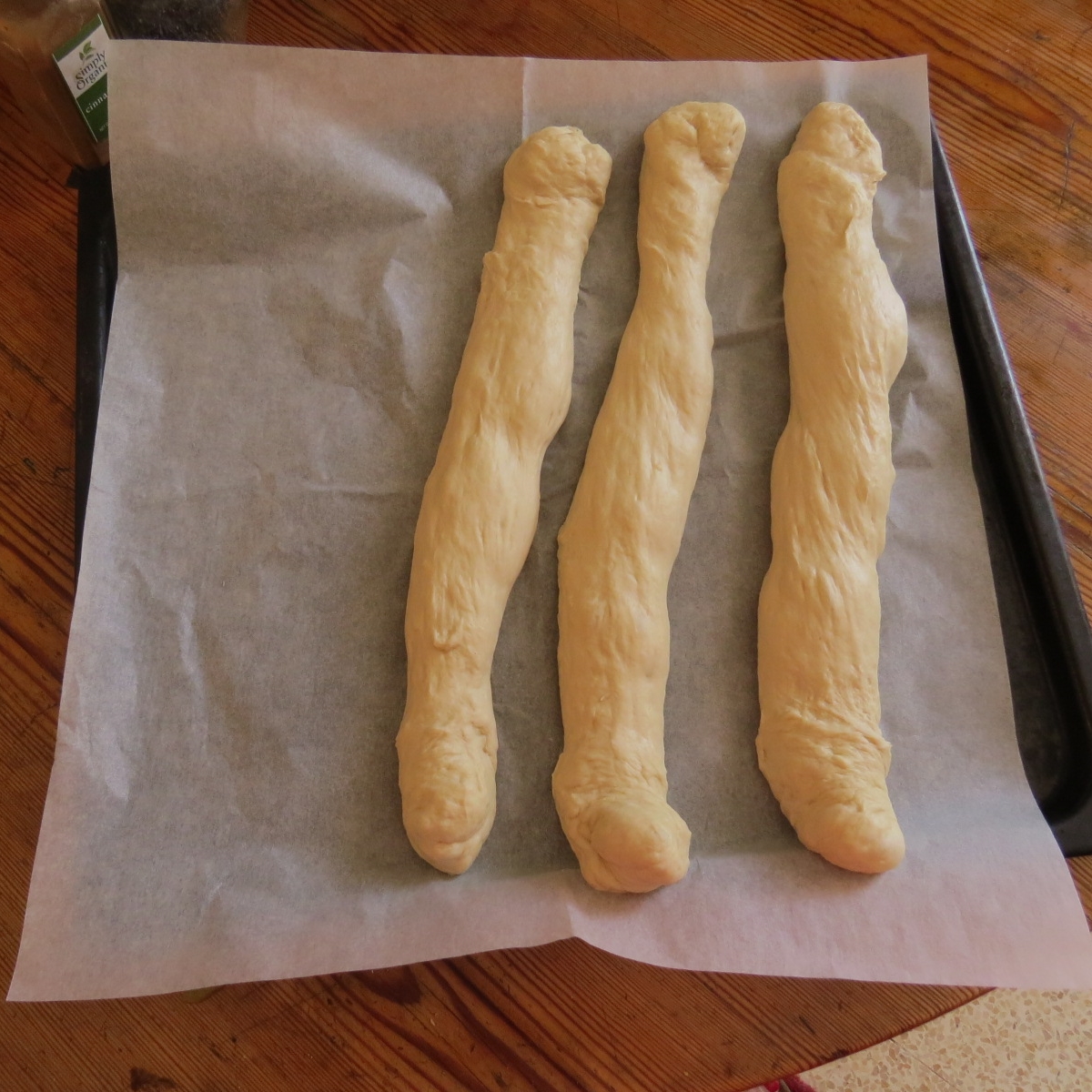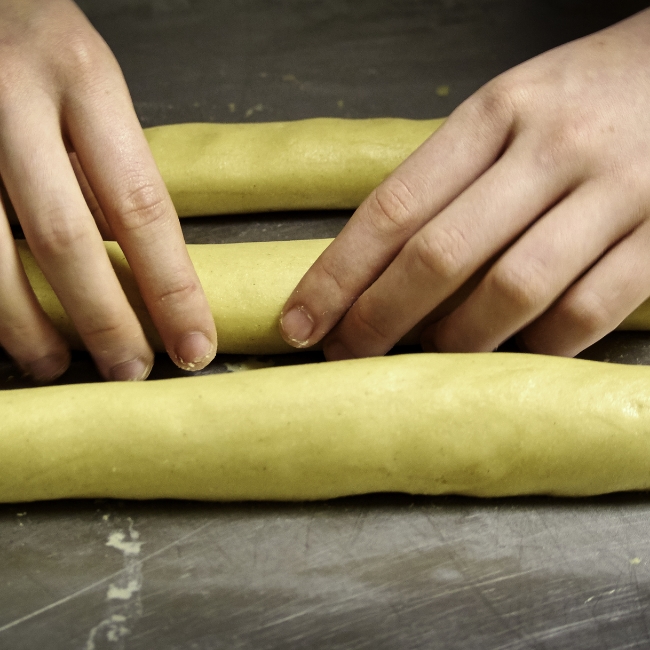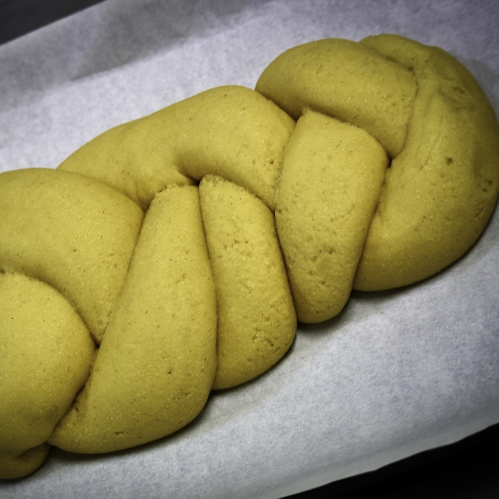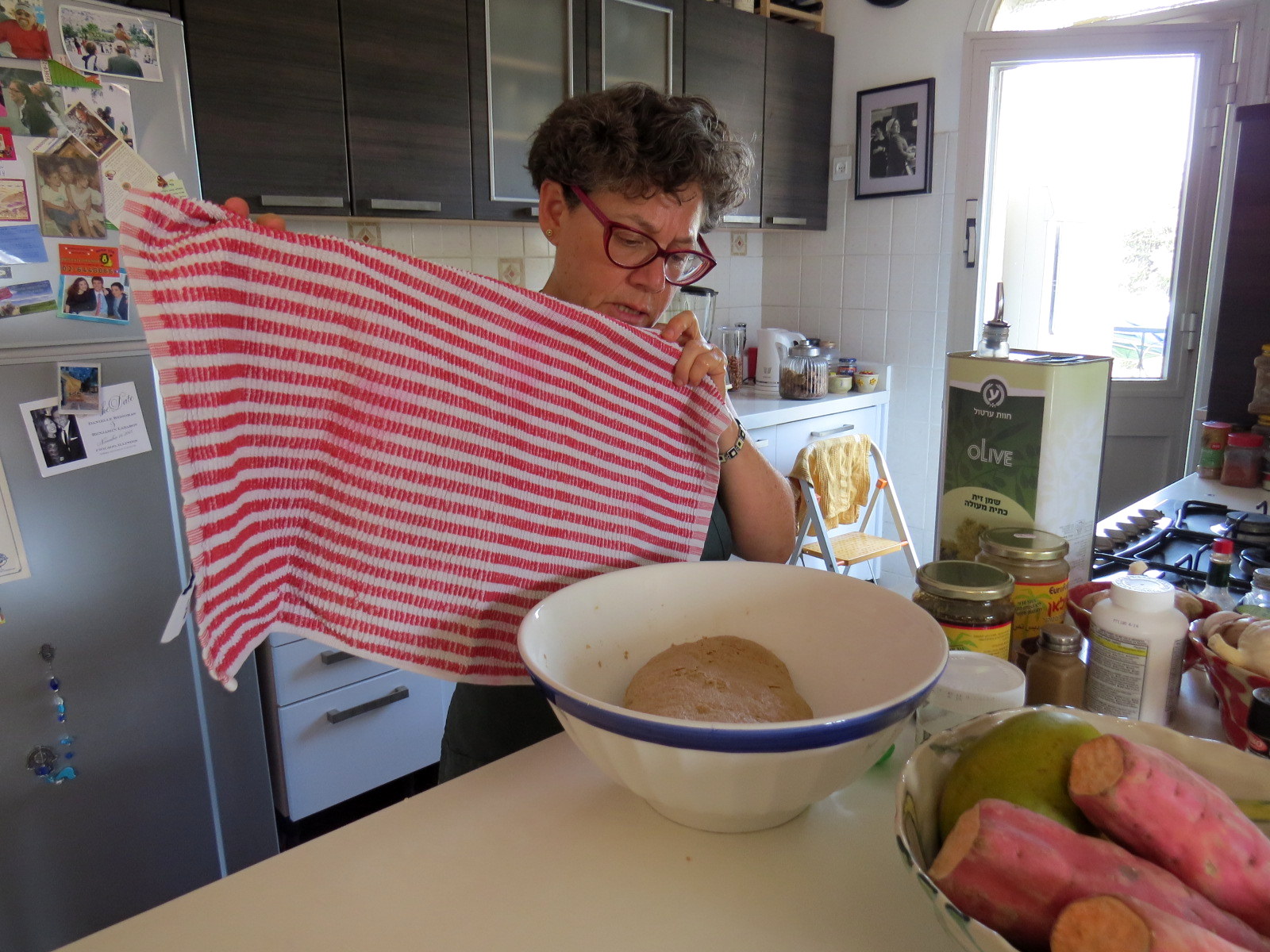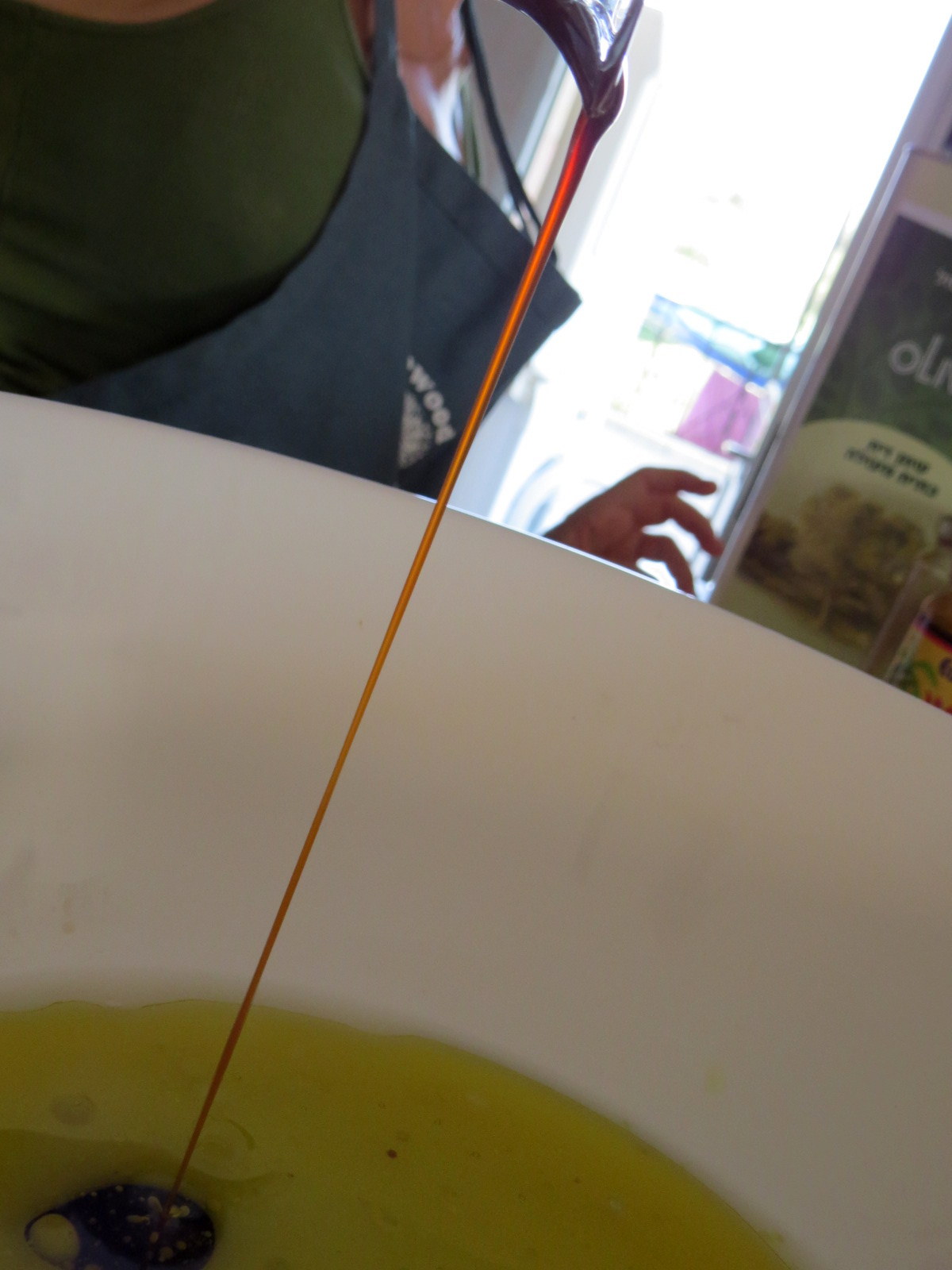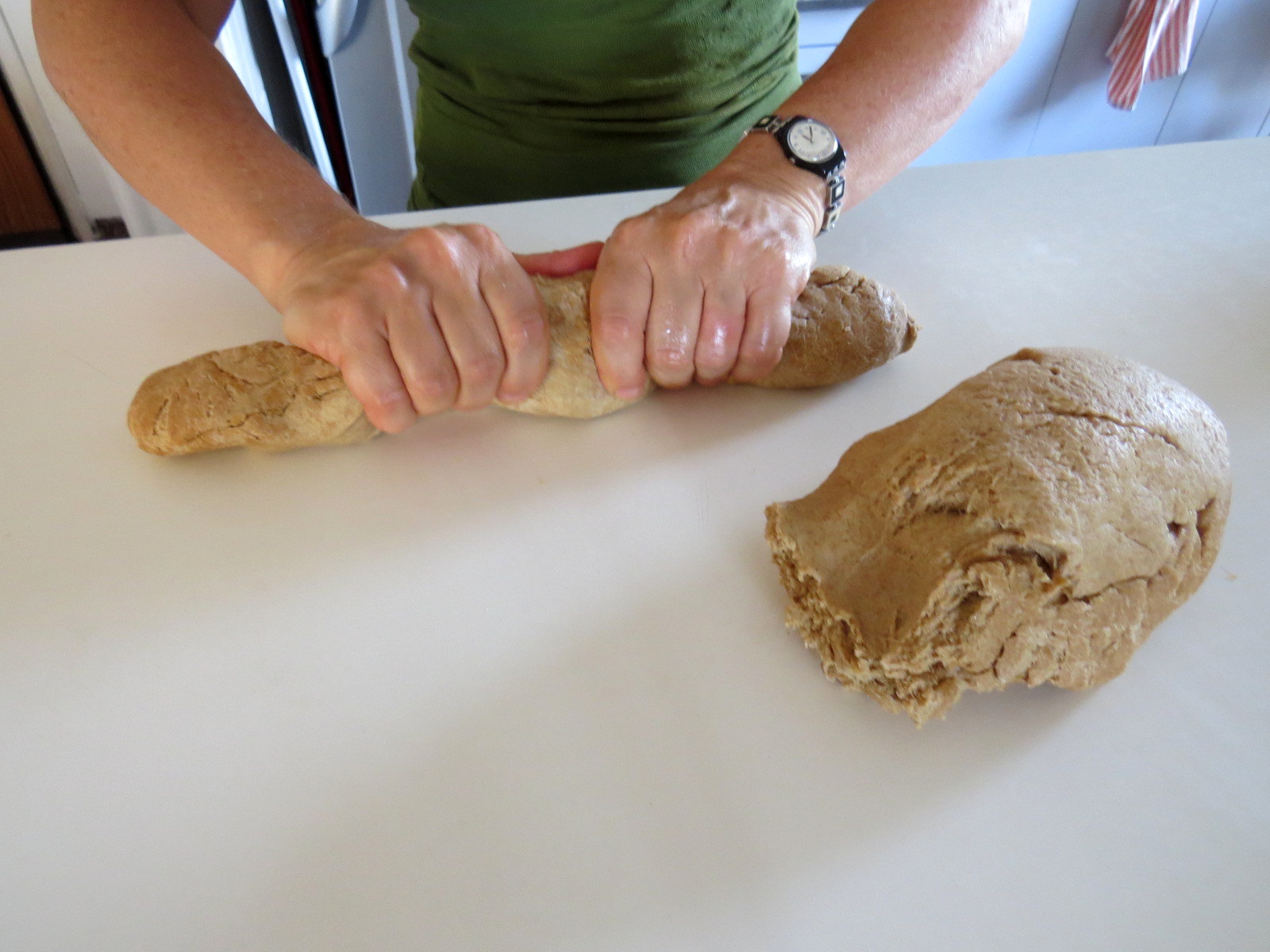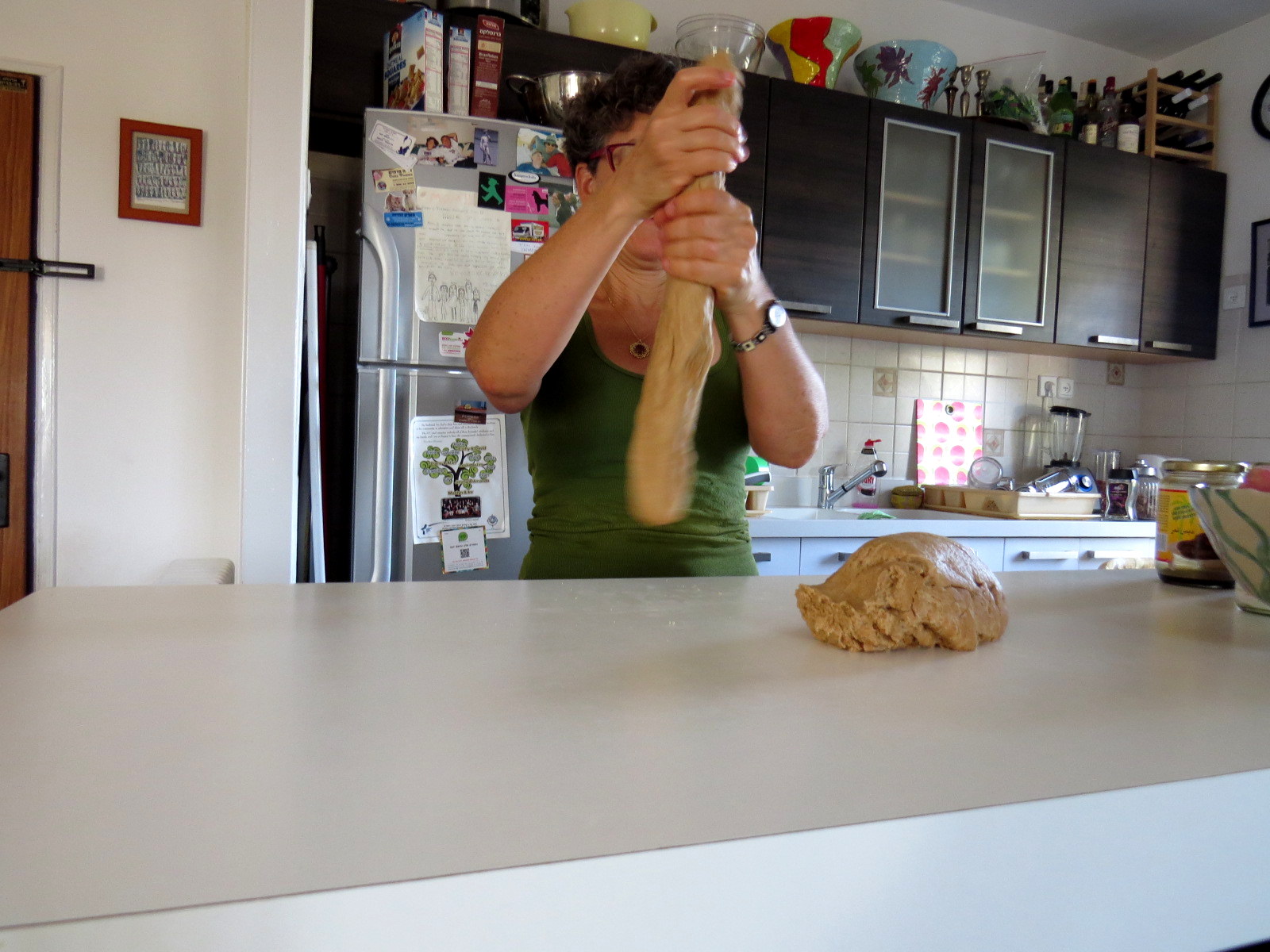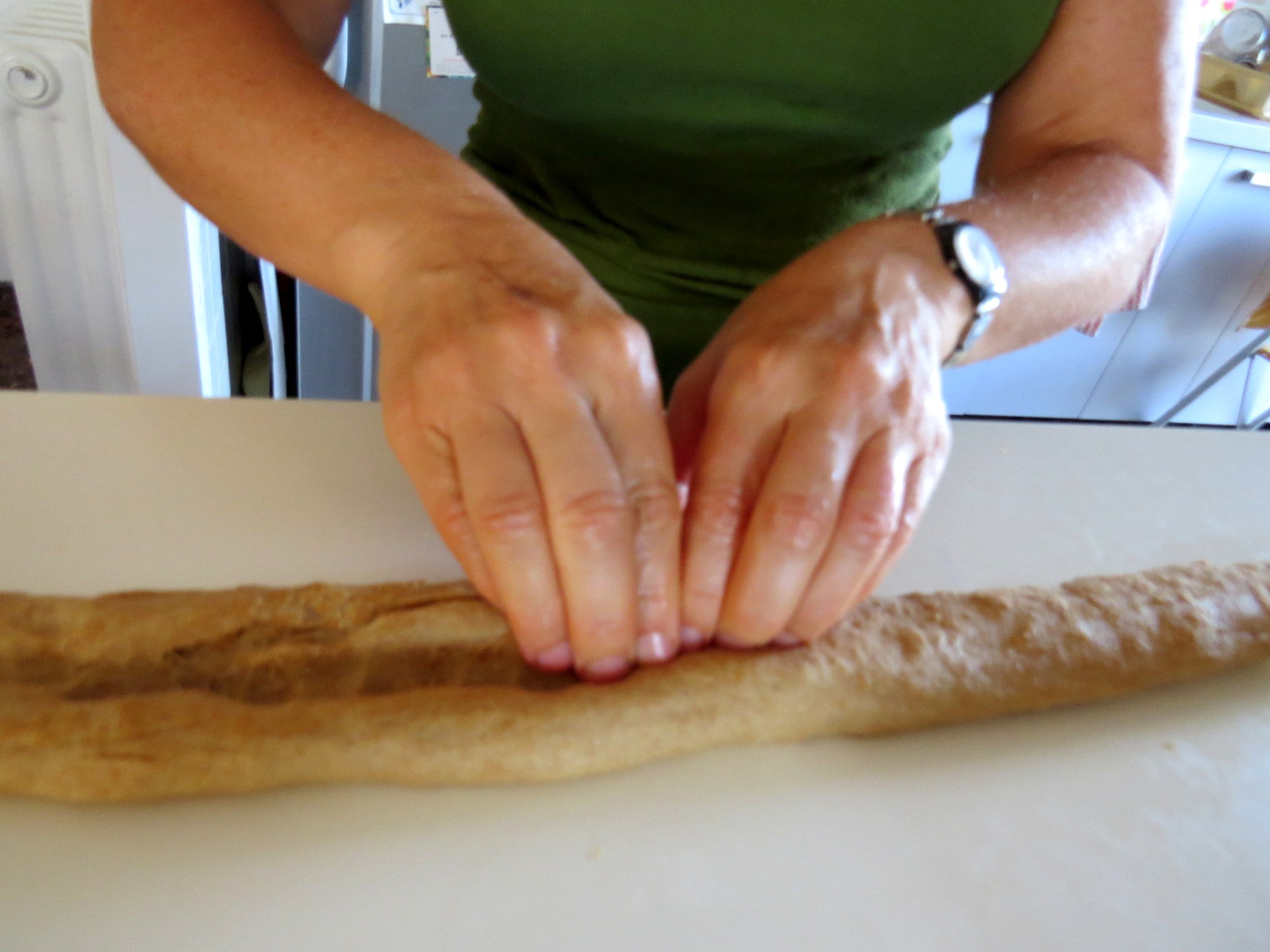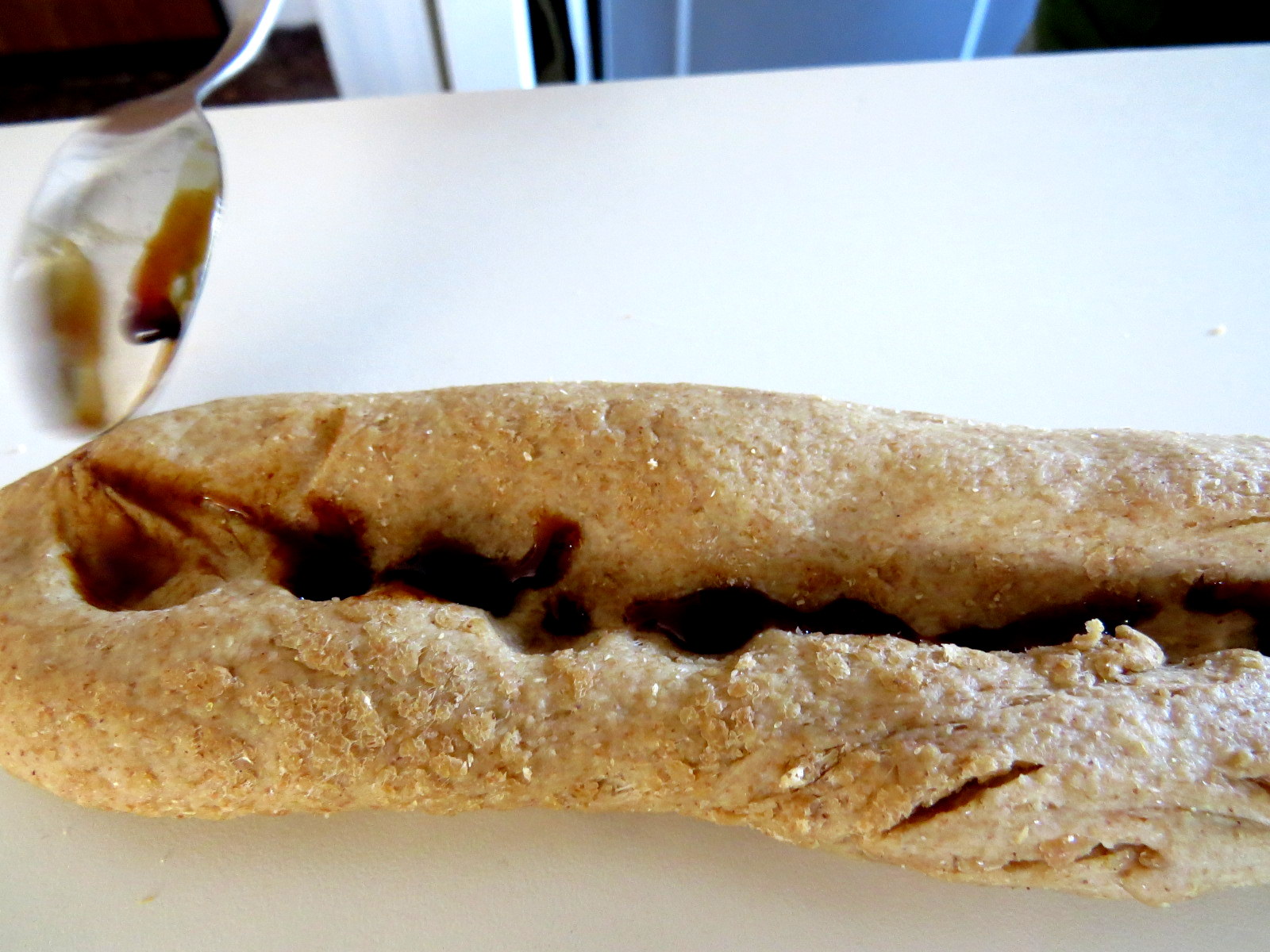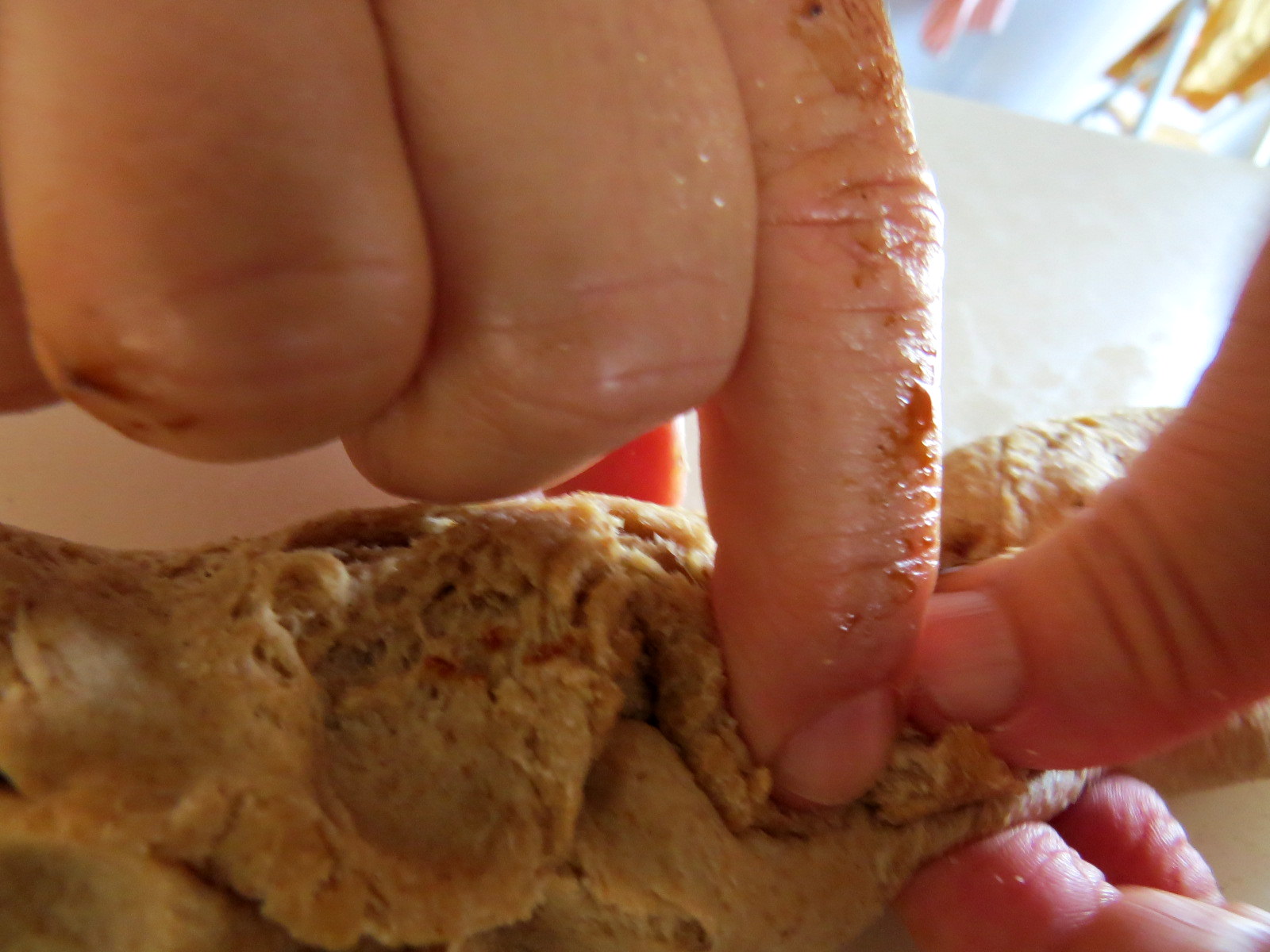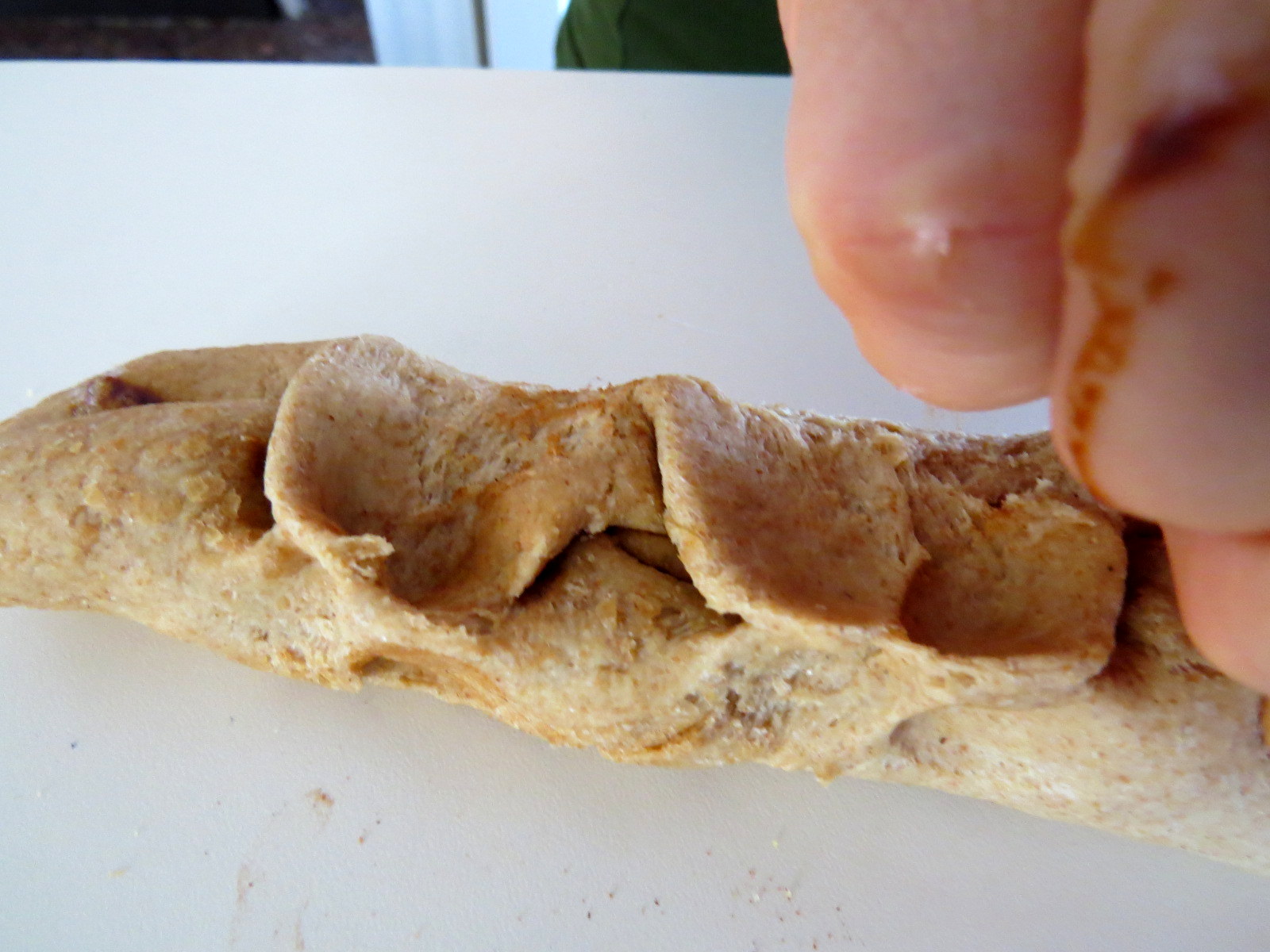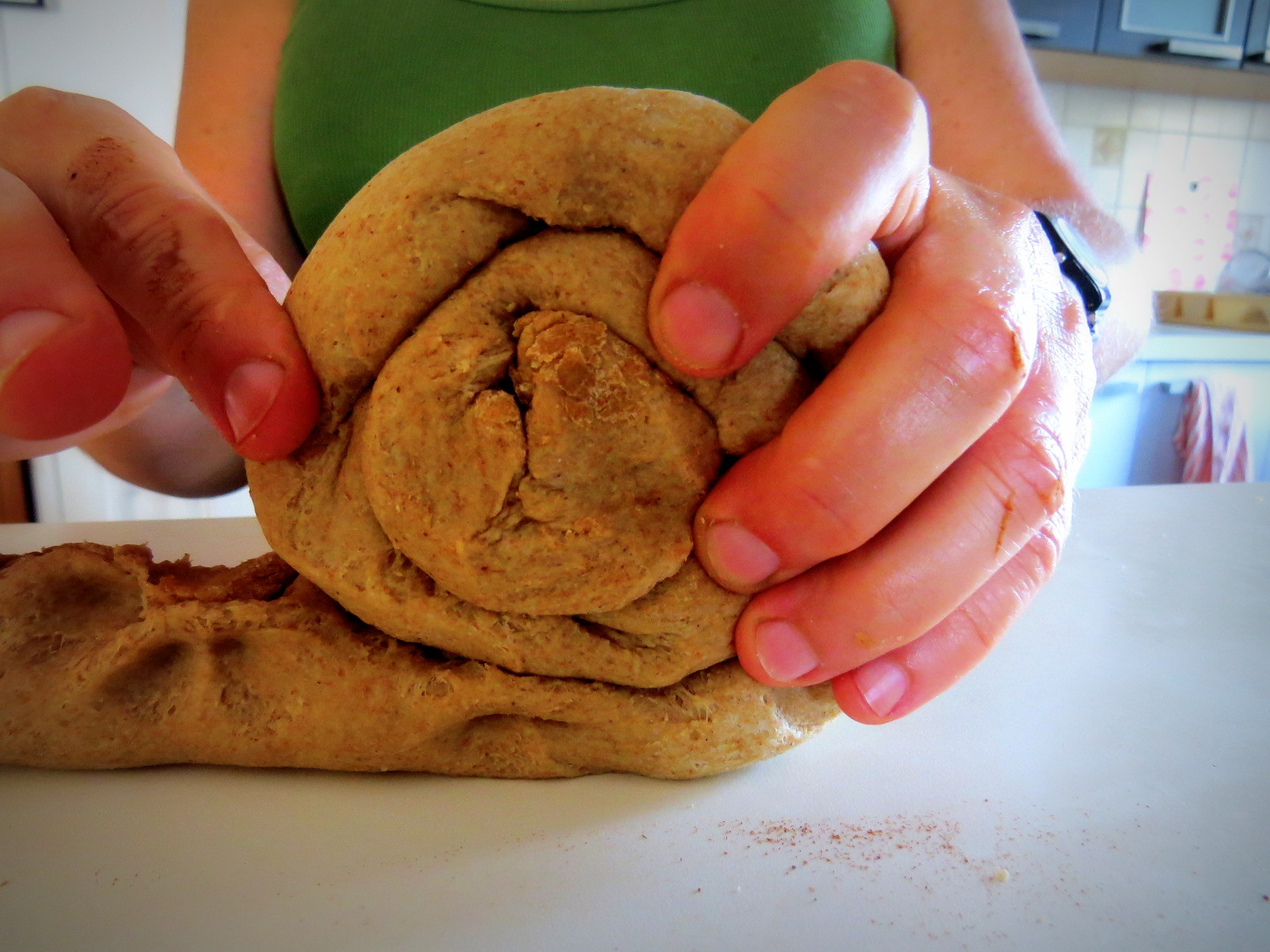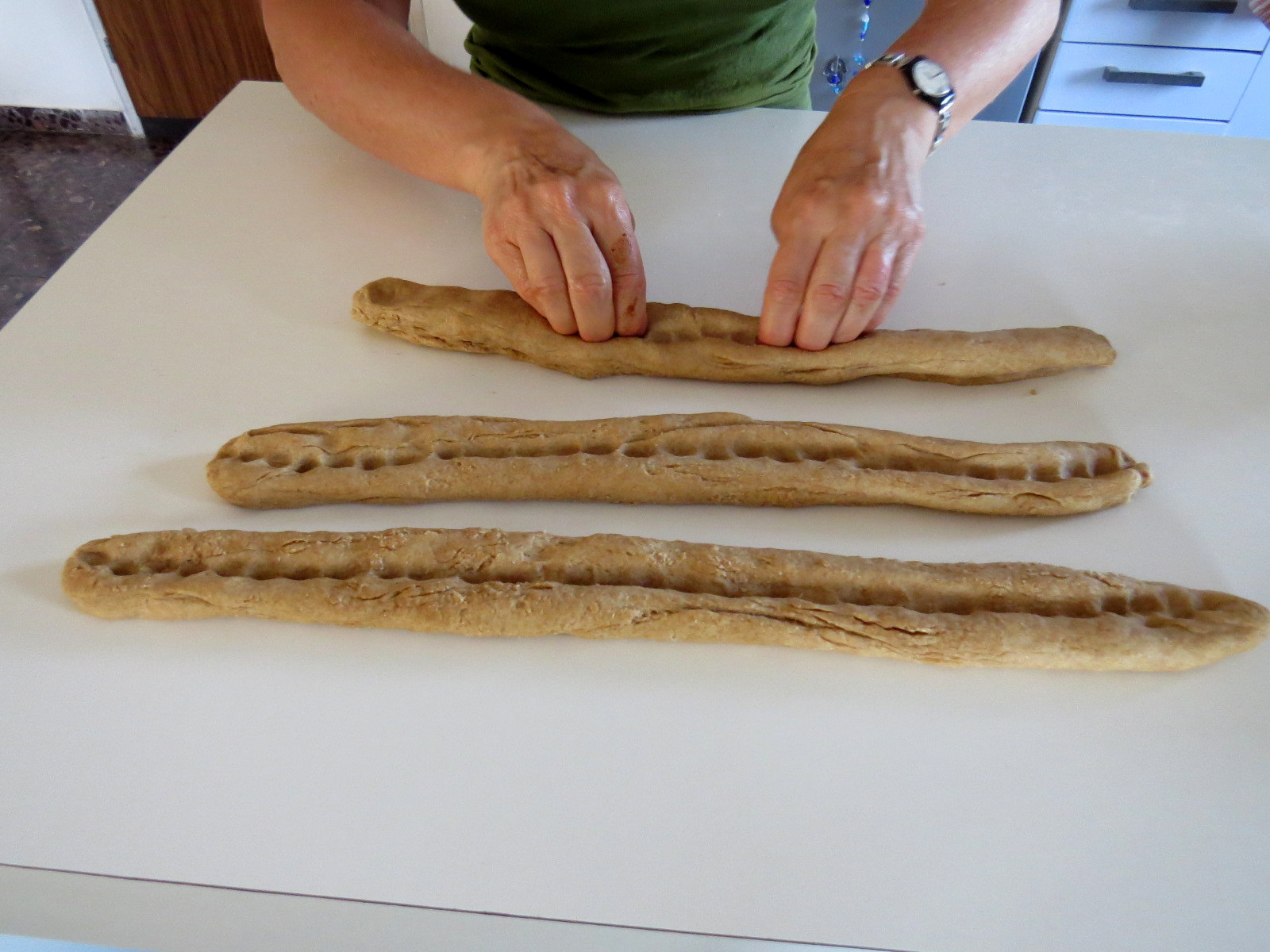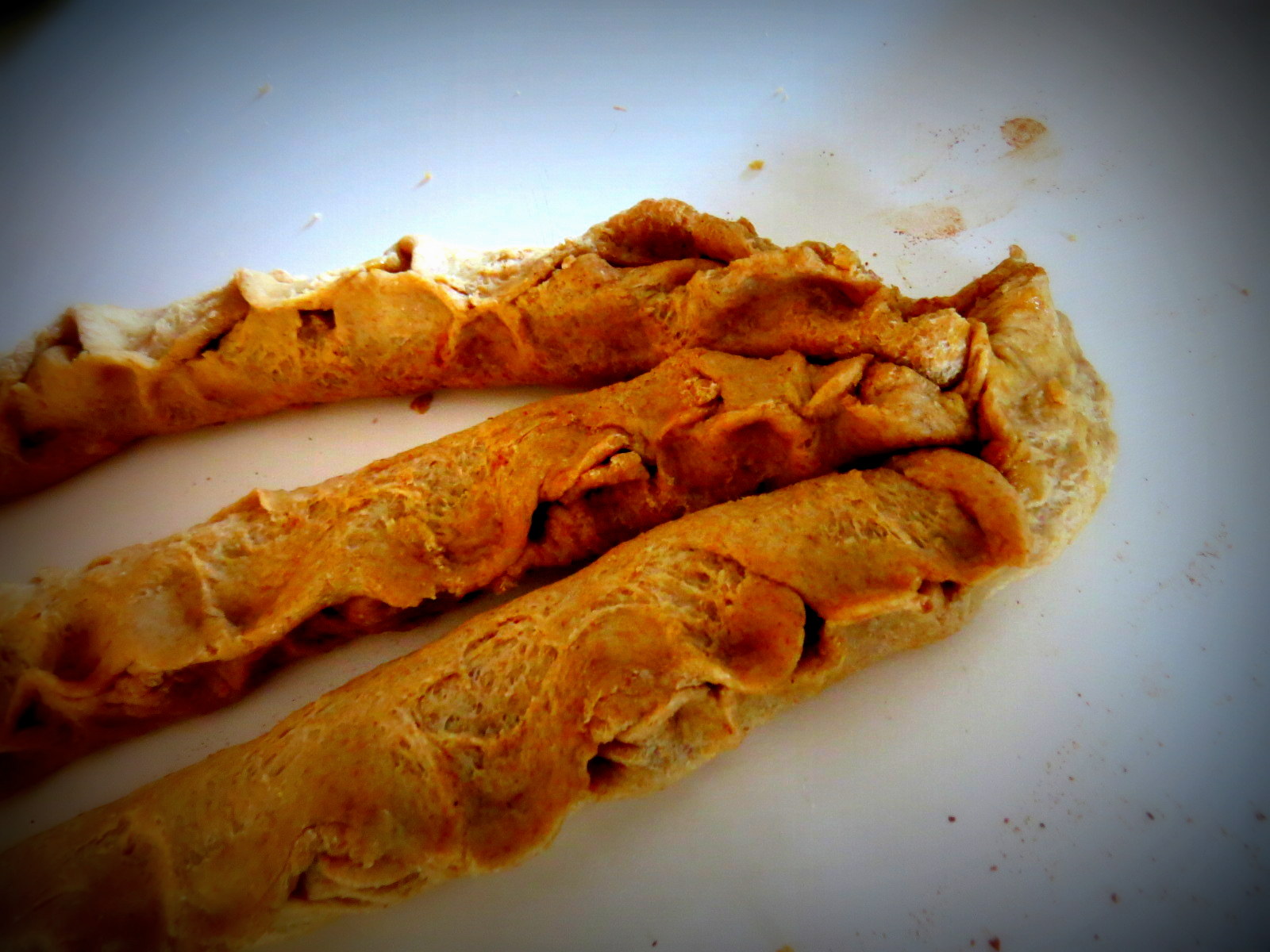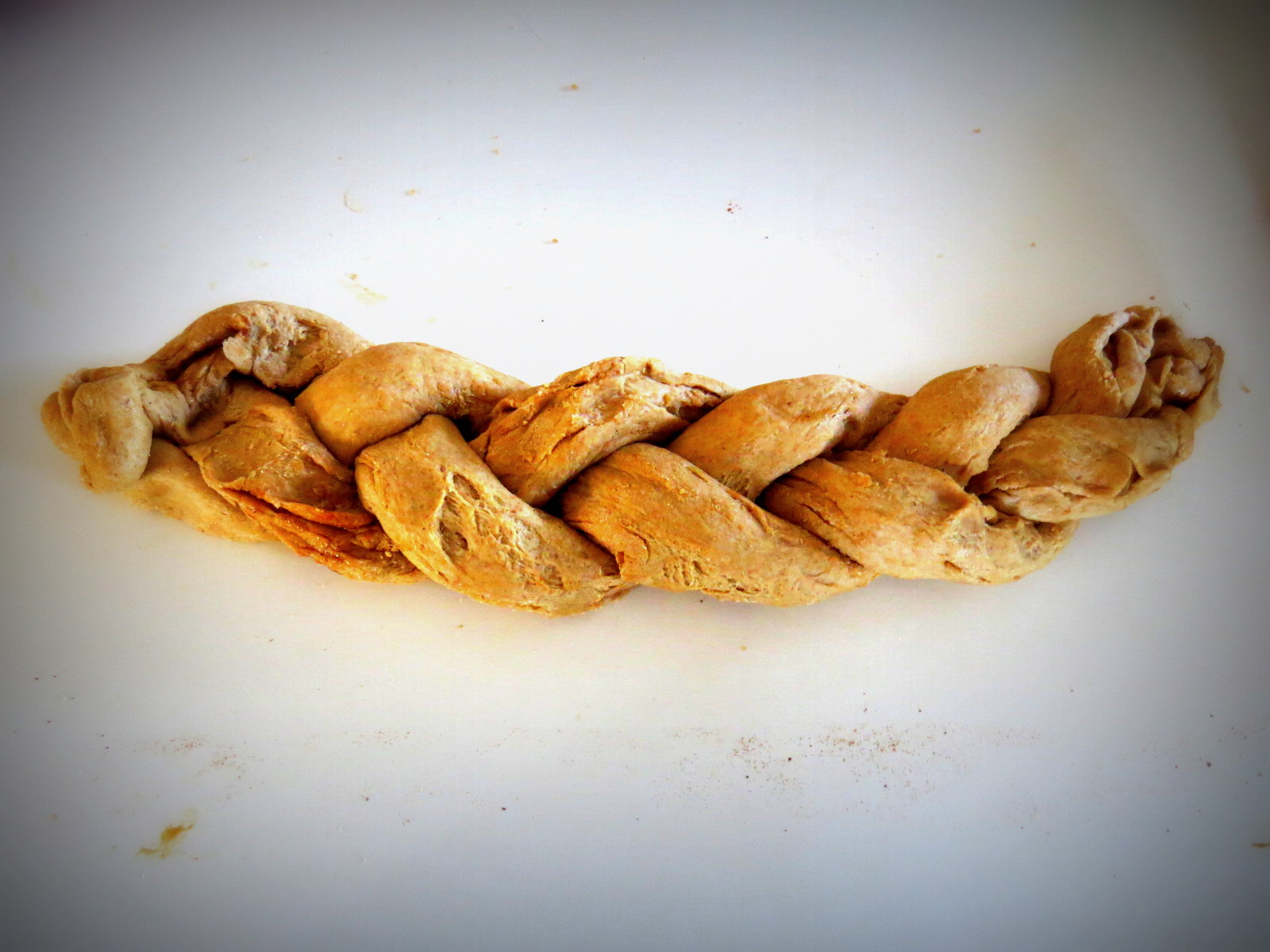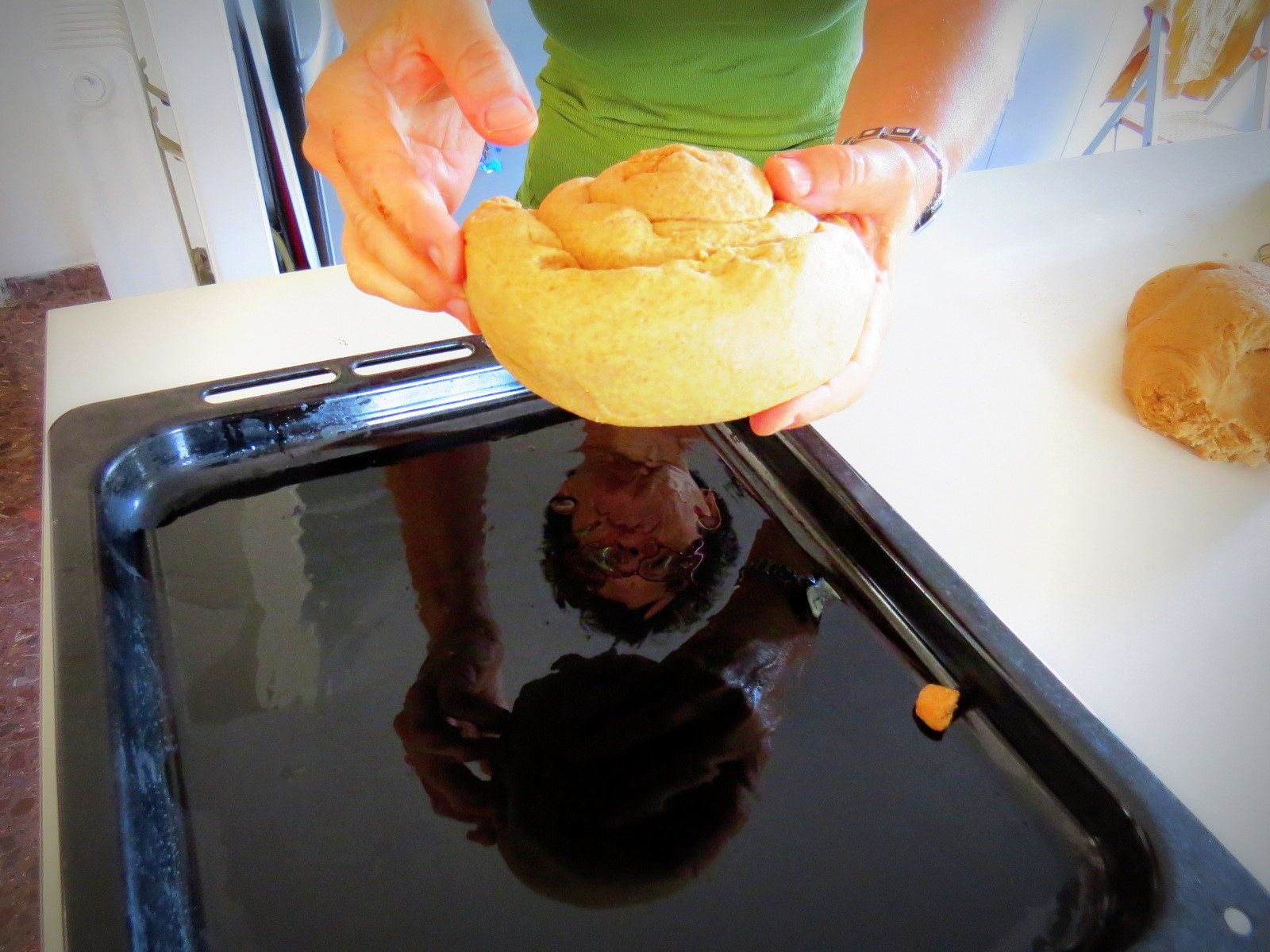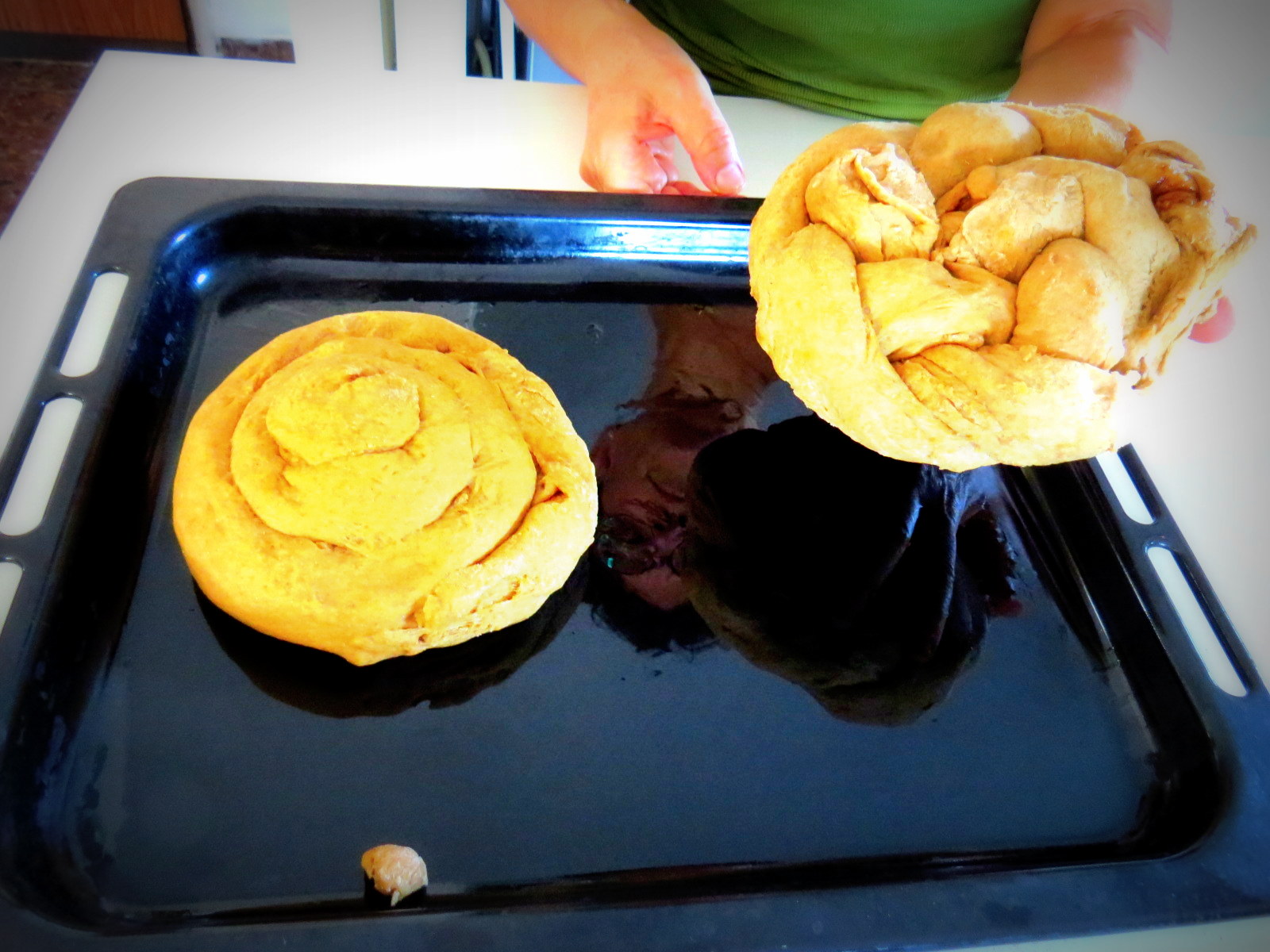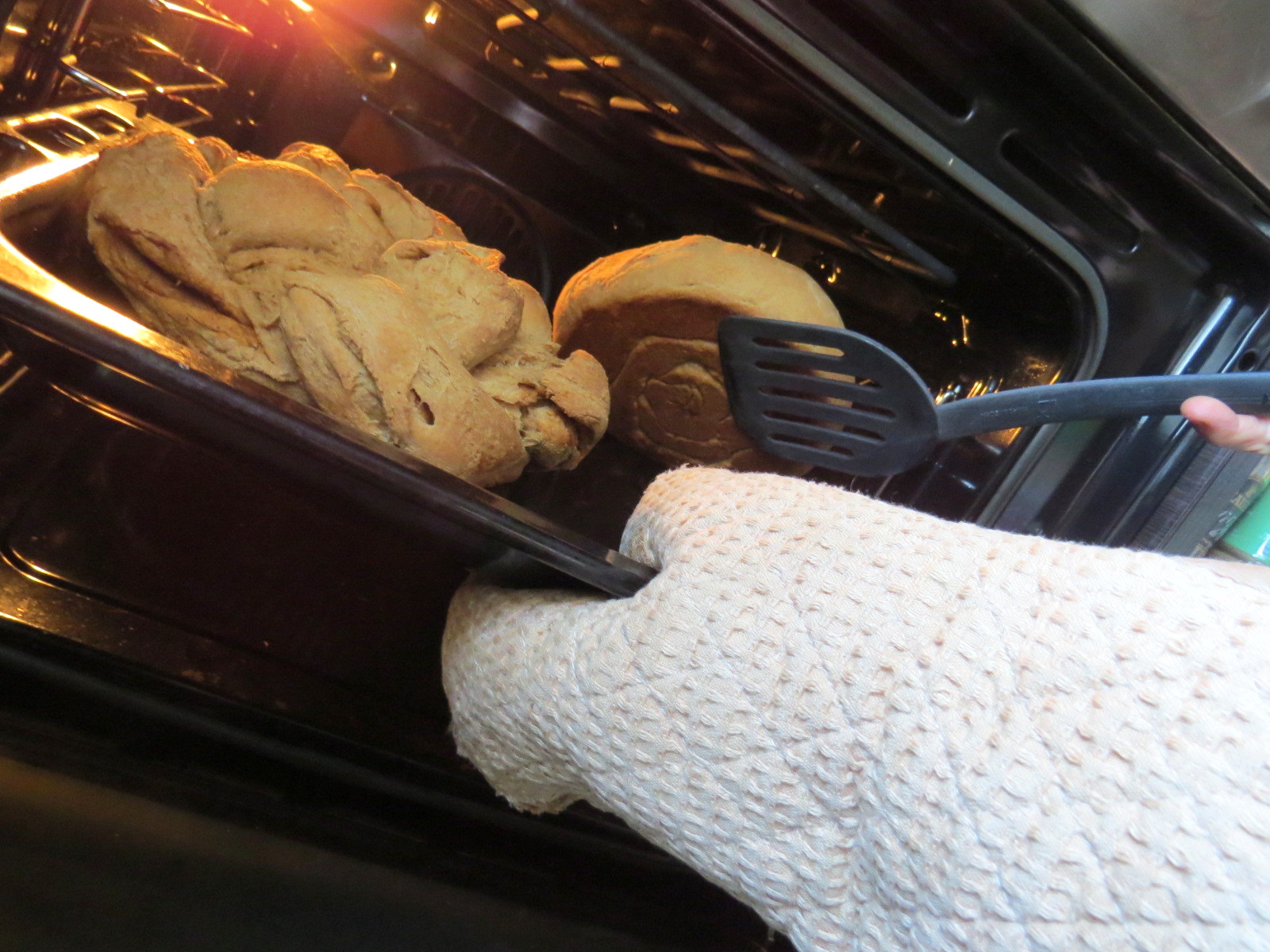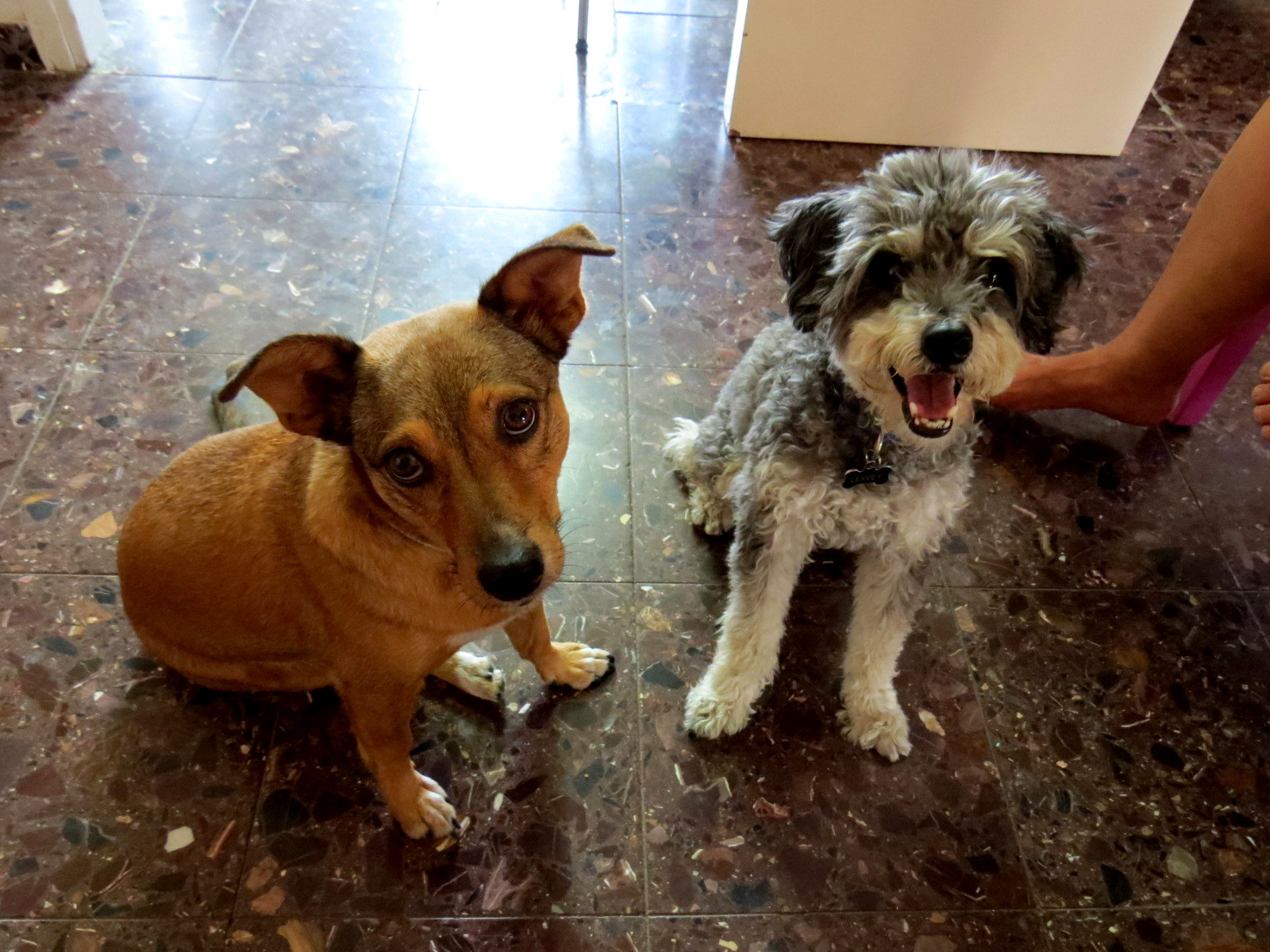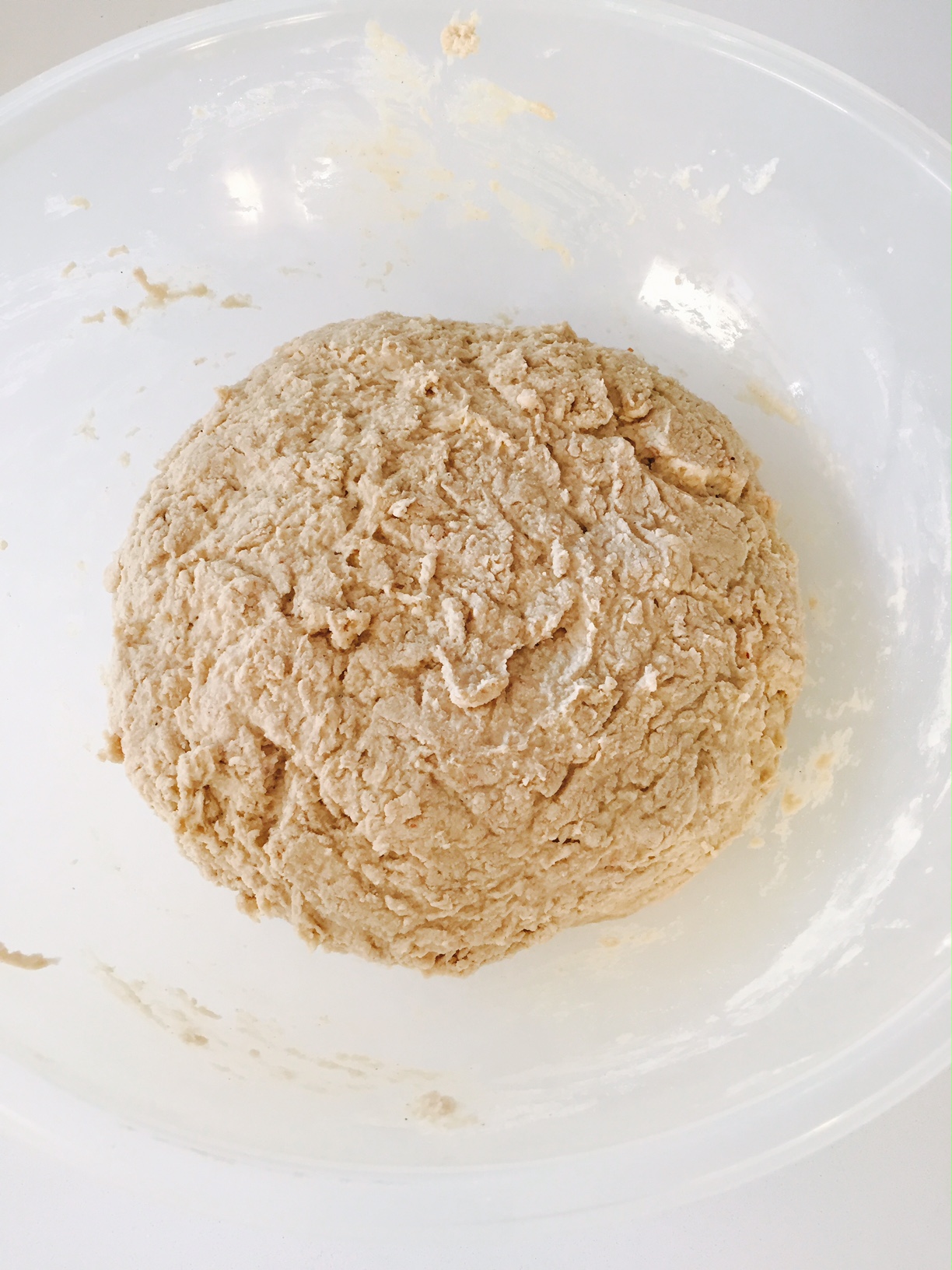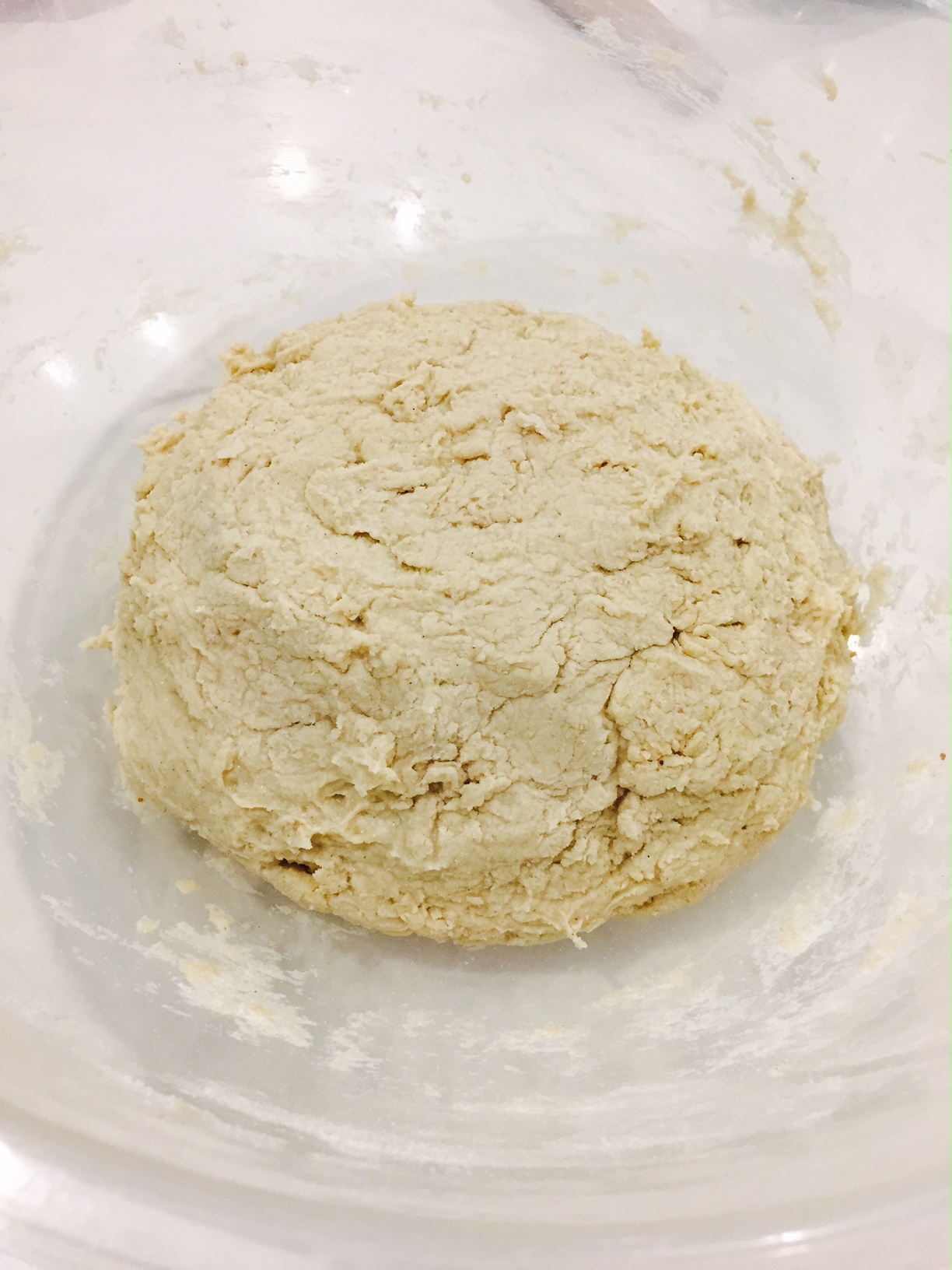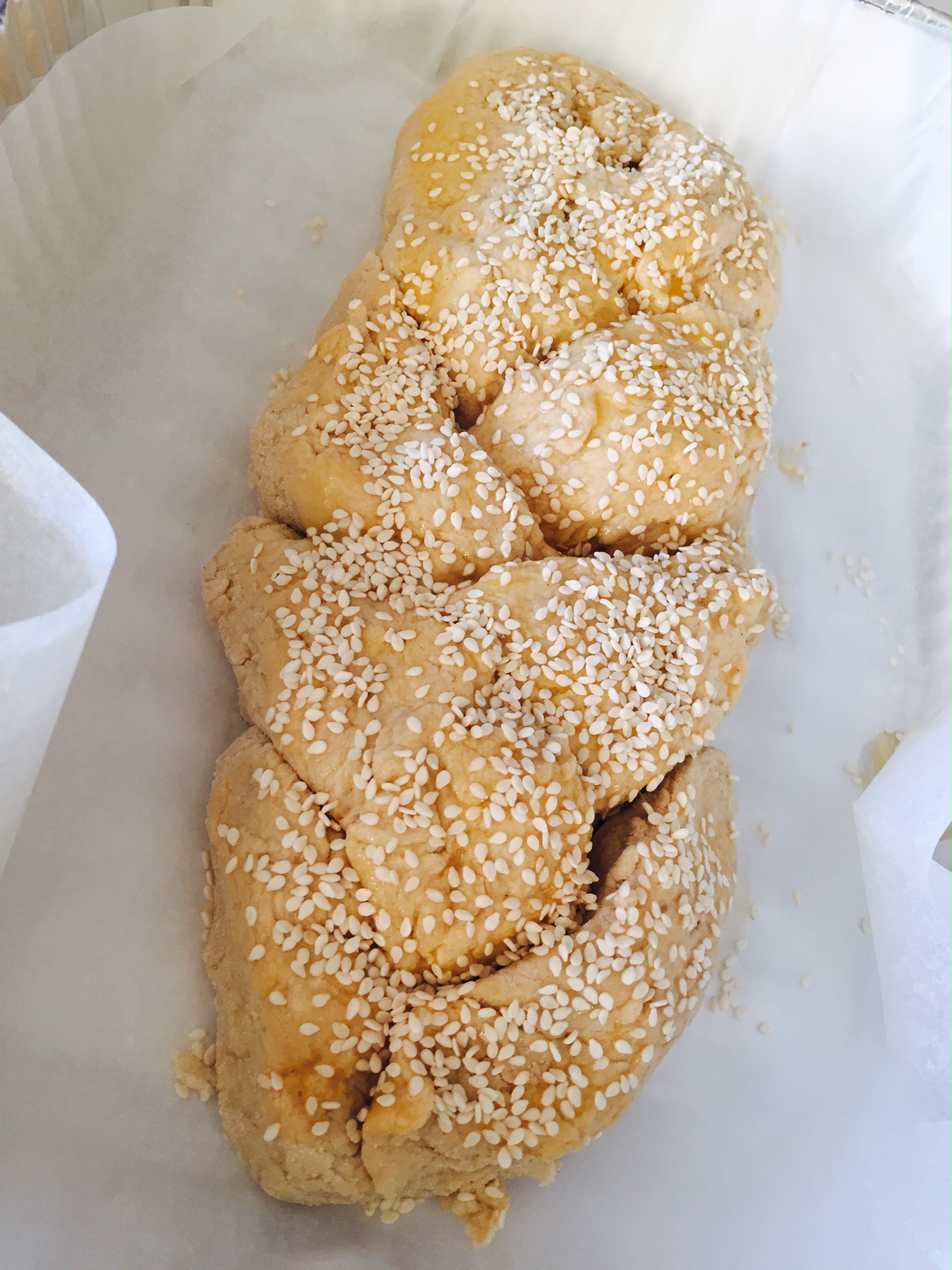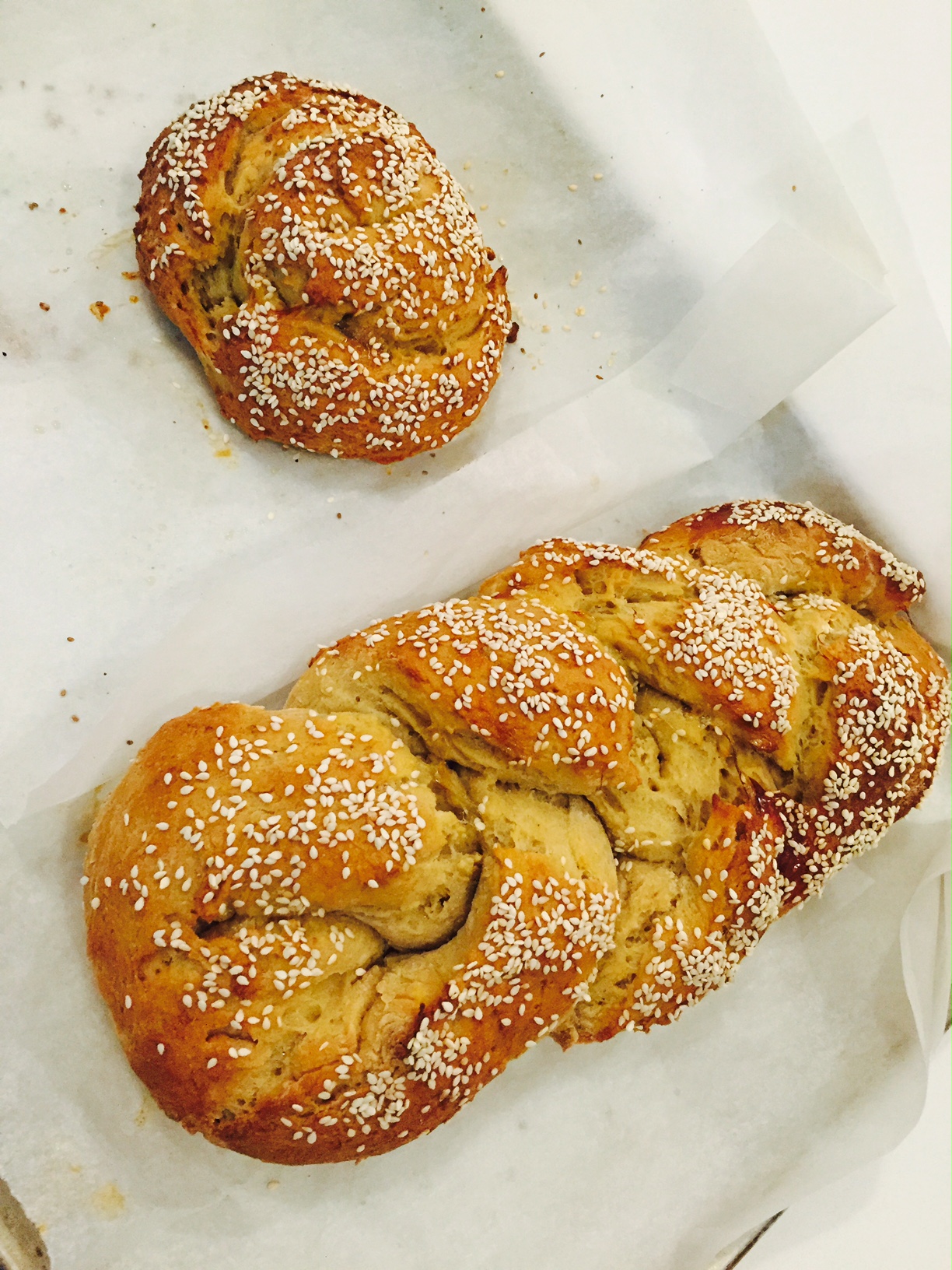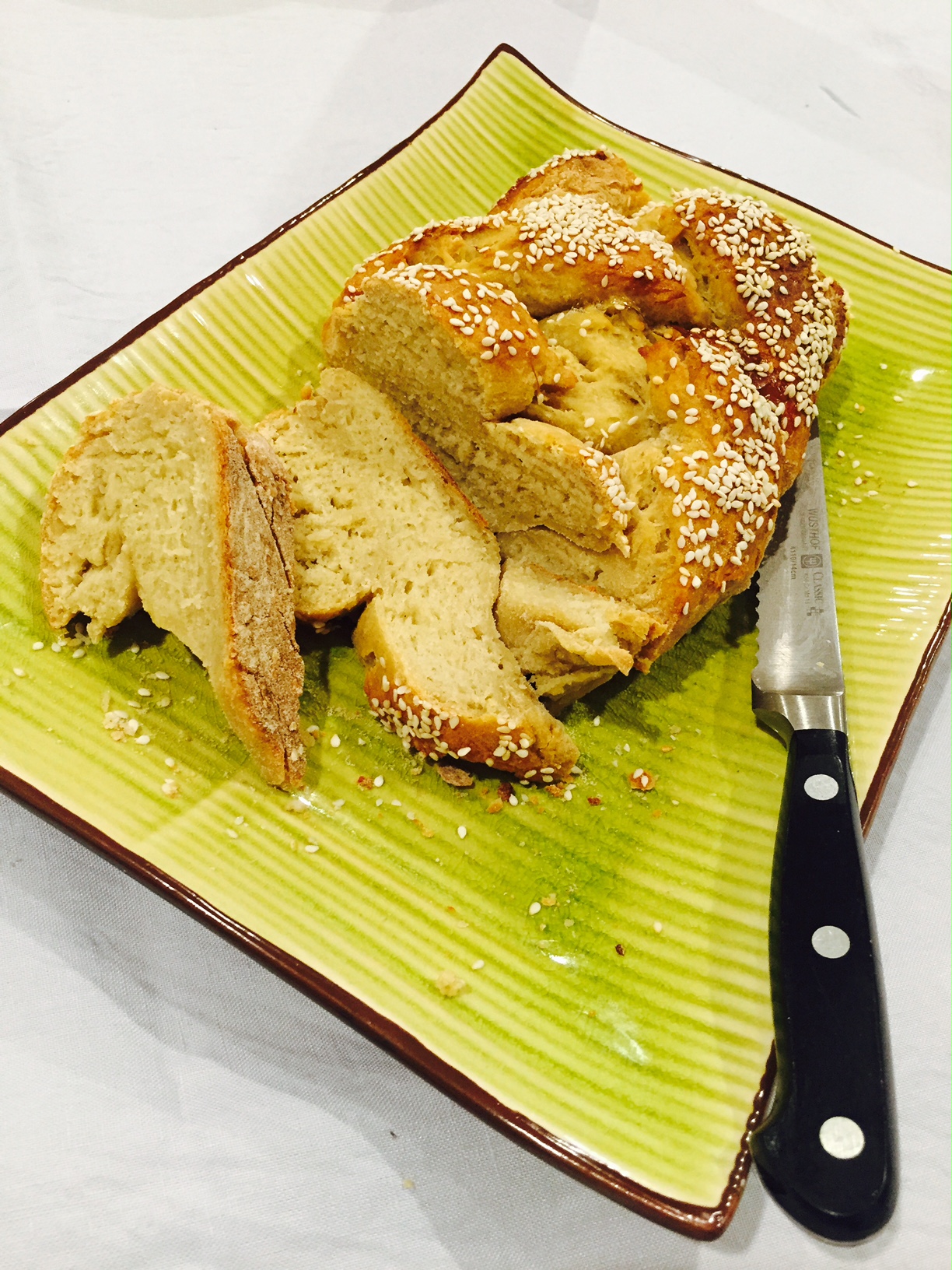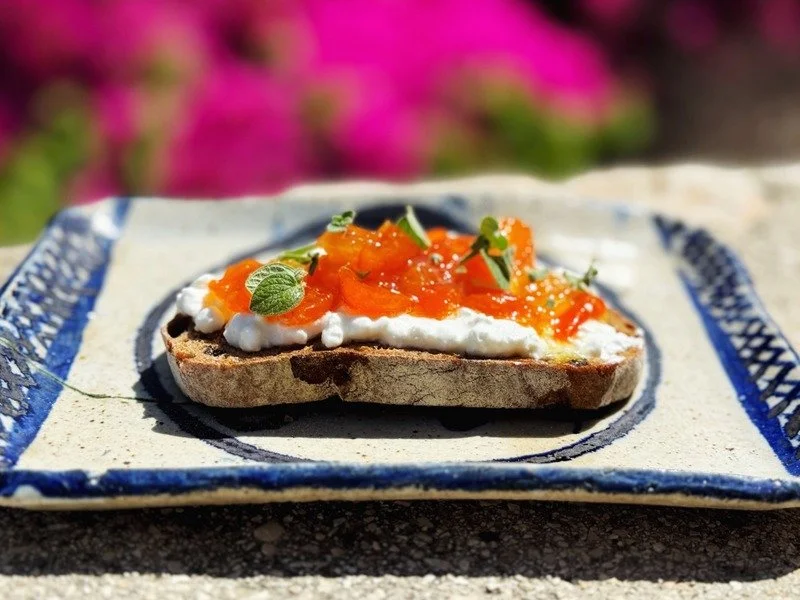SABBATH BREAD
Challah is traditional braided yeast bread, prepared in Jewish homes for the Friday night meal. It is usually a white loaf, the dough enriched with eggs and a little honey or sugar and sprinkled with sesame or poppy seeds.
This week we've been busy at Food is Love, with 5 kitchens baking very different challah loaves, 2 in broiling Jerusalem, and 3 in freezing Australia. We've made the original white flour version, under the guidance of one of the Food is Love grandmothers, Baba Schwartz, in Melbourne. And we've also made a vegan loaf, with spelt flour, date syrup (silan) and cinnamon (!) and TWO gluten free versions.
it's an Addiction
In my handwritten recipe book, which is stuffed with extra pages and cuttings going all the way back to when I lived in London more than 20 years ago, I found a challah recipe from an Israeli newspaper from 2010. There, Israeli chef Doram Gaunt waxes lyrical about the white loaf, “braided from a soft, slightly sweet and rich dough, which distinguishes the weekend from the weekdays, and is incomparable when it comes to mopping up sauces, as a bed for a thick slathering of butter, as a casing for sandwiches. Later in the week, if any challah remains and has gone a bit stale, there is nothing better for French toast or grilled sandwiches.”
Challah and the Jewish woman
Baba Schwartz is a formidable baker, who was born in a village in Hungary, and experienced the horrors of World War Two there as a teenager. She has lived in Israel and Australia and every week, where ever she's lived, she's baked her challah and yeast cakes. She says Jewish law requires a Jewish woman to do 3 things:
- To bake challah, and also to take a small piece and separate it from the loaf and bake it till it’s burnt. "This is to remember all those who went before you."
- To light Sabbath candles, to symbolise the start of God's day of rest. “This keeps family together and makes us civilised.”
- To go to the ritual bath, or Mikve; or as Baba sees it, to have a clean house, to be clean and healthy.
Baba Schwartz
Yeast
Baking challah requires yeast, and that frightens many people, including me, I have to admit. It’s not like adding a spoon of baking powder to your cake mix! It’s a living thing. It can be unpredictable. But Baba Schwartz has it under control. She’s written a book called The Lost Art of Baking with Yeast, to preserve her rich Hungarian recipes, and to try and pass on her knowledge about handling yeast so you get the best results with it.
Having watched Baba bake, and followed her recipes, I can say that baking with yeast is about confidence - and also elbow grease.
“You have to knead, and you have to sweat,” says Baba.
RISING
The other thing you have to do with yeast is leave it to rise. It’s currently high summer in Jerusalem. On one of the hottest days of the year, nothing takes too long to rise !!! But if you are baking in winter, you may want to heat your oven and then turn it off and put the dough in there to rise, or to put the starter yeast water mix in a cup which you sit in a bowl of warm water.
Basics
Recipes vary, but 1 kilo flour will produce 2 large (or 3 small) loaves.
You can make your dough without eggs – and Baba often does. That’s her standard recipe, and having made it, I can say it's delicious and has a beautiful consistency.
If you are using eggs, 1 kilo of flour will generally takes 2-4 eggs, 100 ml oil, and 2-3 cups water. The amount of eggs and oil will obviously affect the richness of the challah. You won’t be surprised to learn that challah made in the US is very rich, with lots of eggs, oil and sugar! The recipes below are more modest.
I have adapted Baba's recipe slightly, adding a little more salt, with the option of some honey or silan as well.
Baba’s Challah
Makes 2 large loaves or 3 smaller ones.
INGREDIENTS
- 1 kilo / 7 cups plain flour
- 1 ½ tablespoons dry yeast or 20 g fresh yeast
- 2 ¾ cups warm water
- Pinch of sugar
- 1 ½ teaspoons salt
- Scant ½ cup olive oil
- Optional for a richer dough:
- 3 eggs, or 1 egg + 2 egg yolks
- 2 tablespoons honey, silan or maple syrup
- Egg wash for glazing
- Poppy or sesame seeds for sprinkling
Method
1. In a deep bowl, mix ¼ cup water with the yeast and a pinch of sugar. Leave to “proof.” It should take 8-10 minutes for the yeast to bubble.
2. Once the yeast has risen, pour the rest of the water over it, and the oil (and eggs and honey, if using). Pour in the flour and salt, and mix. Knead in a mixer with a dough hook, or by hand for 2-3 minutes. It will come together very quickly, but will be sticky.
3. Knead by hand for a further 10 minutes, or in the mixer for 5 minutes. It is ready when it feels elastic and doesn’t stick to your hands.
NOTE: Baba devotes a whole page in her book to the art of kneading, emphasizing that “while an electric mixer equipped with a dough hook will certainly make life easier, it is, however, important to learn the method for kneading by hand, to give you a better understanding of and feeling for working with dough.” No shortcuts! One of the many things I love about Baba Schwartz :-)
4. When your dough is ready, cover it with 1 tablespoon oil or sprinkle with flour and cover the bowl with a clean cloth. Let the dough rise for 1 hour or till doubled in size.
5. Punch down and knead it again with 2 tablespoons oil. Leave it to rise again for 20 minutes.
6. For 2 braided loaves: Divide the dough into 2 equal parts. Then divide each half into 3 balls, and roll in your hands into a 30 cm rope. You want it thicker in the centre, and tapering at the ends.. Lay the 3 ropes vertically in front of you, on a floured work bench, or an oiled tray. Plait as you would a little girl’s hair. Secure the ends by pinching them together and folding them under the braid. Repeat with the other half of the dough.
7. Preheat your oven to 210 degrees centigrade. Brush the loaves either with beaten egg or warn water in which you have dissolved a little sugar. Leave the loaves to rise for 25 minutes. Brush again with egg or water, sprinkle with poppy seeds and bake for 30-40 minutes. The more loaves you make, the shorter your baking time will be.
SYDNEY TEST KITCHEN – GF VERSION
In Sydney Miyuki made this recipe with store bought gluten free flour. It certainly looks the part - beautiful, actually - but she says it needs more work.
The taste was good, “but the texture was crumbly and a bit like stale scones.”
“We ate it buttered, and with soup, it definitely needs something wet to go with as it is not moist.”
Miyuki is cooking for a GF husband, which makes her harder to please, since she has an alternative. But it also makes her a good judge, tough but fair!
VERDICT
GF Challah requires a complete re-think, not just substituting gf flour into a standard challah recipe. Also a technical point: Making the plaits was not easy as gf dough is not stretchy. If you make a mistake, it’s easier if to go back to knead it all again and start over. (I have to say that I had the same experience with ordinary white flour in my broiling Jerusalem kitchen!) And if that's the case, I think Miyuki's beautifully shaped challah is even more of an achievement!
VEGAN CHALLAH
We have a new test ktichen in Jerusalem this week.
Diane Harkavy, originally from Memphis, Tennessee, is a masseur and mother of 4 daughters.
She's doing this guest appearance because every week she bakes exceptional challah, with spelt flour and without eggs or honey. She uses the delicious local date syrup called silan. "The best is organic, no added sugar, no added anything," says Diane, and she laces her loaf with cinnamon as well.
“This challah recipe originally came via the children’s kindy in Memphis. It had 2 kilos of white flour, 2 cups of sugar, and 6 or 8 eggs – and look where it’s ended up!”
Diane created this new adaptation, because her 4 daughters grew up and became first vegetarians and then vegans. And also because she's a bit of a rebel. Like Baba Schwartz, Diane also stresses the importance of separating a small piece of the dough, and baking it till it’s burnt – hafrasha in Hebrew. Her final piece of adciyou have to integrate baking bread into your day.
“You are never baking the challah on its own. You do one step – and put on a load of washing. Then you return to see the yeast has fermented. Then when you’ve made your dough and you set it aside to rise, you prepare another dish. It's a process.”
Spelt flour
Most spelt flour is brown. You can also find white spelt flour. This will make a lighter loaf, like the difference between plain and wholewheat flour. Diane prefers the full spelt flour. She says it is lower in gluten than wheat flour and a bit more fragile – so don’t over knead!
Diane’s Challah with spelt flour, silan and cinnamon (vegan)
Makes 2 loaves
INGREDIENTS
- 1 kilo spelt flour
- ½ litre / 2 cups warm water
- 1 ½ tablespoons dry yeast
- 1 ½ tbs fine ground sea salt,
- 100 ml / ½ cup olive oil
- 100 ml / ½ cup silan, Middle Eastern date syrup
- Extra silan and cinnamon for final steps
METHOD
1. In a large mixing bowl, mix water and yeast - no need to add sugar or flour! Let it ferment for 1-5 minutes.
2. Add salt, oil and date syrup, and swirl gently. Add spelt flour. Let sit for 5 minutes till the flour absorbs the moisture.
3. Mix with hands and knead till well mixed. Take out of bowl when it pretty much sticks together in one mass. Knead until it is malleable, but don't over do it. "Spelt is fragile,” says Diane.
4.. Return dough to bowl and cover with dish towel. Let sit for 2-4 hours. The dough should about double in size.
5. Pull off a bit and say the prayer for the separation of challah. Preheat oven to 180 degrees. Lightly grease baking pan.
6. Divide dough in to 2 pieces. Take the first piece and roll into a long rope which you flatten to be 2 cm wide. The dough is quite stiff, which makes Diane’s innovation easy to do: make a valley in the centre of the rope, using your fingertips. With a teaspoon, drip tiny amounts of silan into the valley, and sprinkle cinnamon along the silan. Don't get carried away - you are not making a desert, just a spicy loaf.
7. Pinch the valley closed with your fingers in a series of little kiss-shaped joins, and then roll up into a snail shape.
8. Take the second half of the dough, and divide into 3 pieces. Roll into ropes, which you will braid into a plait. Repeat instructions in step 6, making a valley in each, filling with silan and cinnamon and then pinching closed. Braid the 3 prepared ropes together. Even when she braids it into a plait, Diane then folds the plait into a round. “I like the circularity,” says Diane, who is also a potter.
9. Bake for 20-30 minutes. Check for done-ness by lifting the loaf and seeing the bottom. It is ready when it’s getting dark. Don’t let it burn!
JERUSALEM VERDICT
I watched Diane bake her challah, and the result is amazing - a dense, complex bread, salty, sweet and spicy. You are not sure what the separate ingredients are, but you are aware that it's subtle and tasty. A real winner! Diane's challah is a favourite with her dogs too. One pooch is from Memphis and the other from Jerusalem, and I think it's obvious which is which. Can you tell?
Diane's challah is a favourite with her dogs too. One pooch is from Memphis and the other from Jerusalem. I think it's obvious which is which. Can you tell?
In my kitchen, I made Grandma Baba’s challah with white wheat flour, and also tried Diane’s cinnamon-and- silan-patent-pending innovation. I was not very successful. The regular wheat flour dough is softer than the spelt flour dough. Pinching and braiding proved difficult. It probably didn't help that it was the hottest day since the Chicago fire, when everything was slip-sliding its way all over the kitchen.
Still, the taste was great and the texture of Baba’s plain flour challah is simply the best I've ever made.
MELBOURNE TEST KITCHEN
In Melbourne, Amanda devised her own gf + vegan recipe. Way to go Amanda!
She set herself the challenge of creating a gluten free challah “that was not only worthy of a place on our Shabbat table, but also one that absolutely anyone could enjoy.”
“I wanted to try and keep the oil quantity down, reduce the sugar, and attempt to make a GF challah that didn't become a rock the next day.”
Amanda's GF Challah
Makes one large challah. Or a medium challah and a smaller roll, when your daughter comes and asks for you to bake one specially for her :-)
Note: This is half the quantity of the 2 recipes above
INGREDIENTS
- 1 cup tapioca flour
- 1 cup quinoa flour
- 1/2 cup sorghum flour
- 1/4 cup almond meal
- 1/4 cup brown rice flour
- 1 tsp fine sea salt
- 1 tbsp xanthan gum
- 1 tbsp dry yeast
- 1 1/4 cup warm water
- 1/4 cup maple syrup
- 2 eggs
- 1/4 cup olive oil
METHOD
1. In a bowl, mix the yeast with maple syrup, cover with the warm water and whisk to dissolve the yeast. Wait until the yeast foams & bubbles (5-10 mins), then mix in eggs (lightly beaten) and olive oil.
2. Next add flours, salt and xanthan gum and combine.
Amanda’s note: “At this point my mixture was still quick sticky, so I slowly added a bit more brown rice flour & almond meal until the consistency was better. Sorry – I have no idea how much was just guided by how sticky it felt.”
3. Once it’s ready, cover and leave it to rise overnight. Note: It will not rise as much as dough made with ordinary flour!
4. Preheat oven to 190 C. Divide dough into 3, roll into “snakes” and plait as in the recipes above. Place on a tray lined with baking paper and bake for about an hour. If you feel it needs a bit longer eg 1hr 15mins, you would need to watch it closely at the end.
GF Religious note
After looking at different GF challah recipes, Amanda noticed one important thing. You can only make the Blessing for Bread on challah made with one of the 5 grains named in the Old Testament: barley, rye, wheat, oat and spelt.
“Well, what happens when you can’t eat any of those?!?”
She consulted with a friend who is married to a rabbi, who consulted with the rabbi on Amanda’s behalf, and It turns out, that you simply have to say a different blessing… Isn't it good when the solution's simple?
VERDICT
Amanda says her challah melt amazing, looked fantastic and tasted… awesome!
“You don’t even need to say this is Gluten free,” was one of the comments Amanda received at dinner.
“And one of my favourite parts of my new recipe – the next day it was still soft!! Well, obviously not as soft as when it came out of the oven, but soft enough to eat straight up and not toasted :))”
Also this week we mark the passing of Samuel Pisar, a Holocaust survivor who went onto become an American success story - a lawyer, an adviser to Presidents, and a librettist for his friend Leonard Bernstein.
I read his wonderful memoir Of Blood and Hope as a student, and went to hear him speak when he visited Sydney at that time. During that trip, Pisar went to a meeting at the home of Sam Mane, the father of our Food is Love photographer, Dave Mane. Dave remembers Pisar as down-to- earth and decent. Nice to everyone, as well as so impressive.
The New York Times wrote this beautiful obituary, which ends with the words: "For all his success, Mr. Pisar liked to say, a feral child still lived haunted within him, mocking all his fitted suits, lovely furnishings and worldly renown.
“The little one with the sunken eyes and shaved head helps a lot,” he said. “He’s very severe with me; he disapproves of so many things; he’s a kind of conscience.”
Samuel Pisar 1929 - 2015
